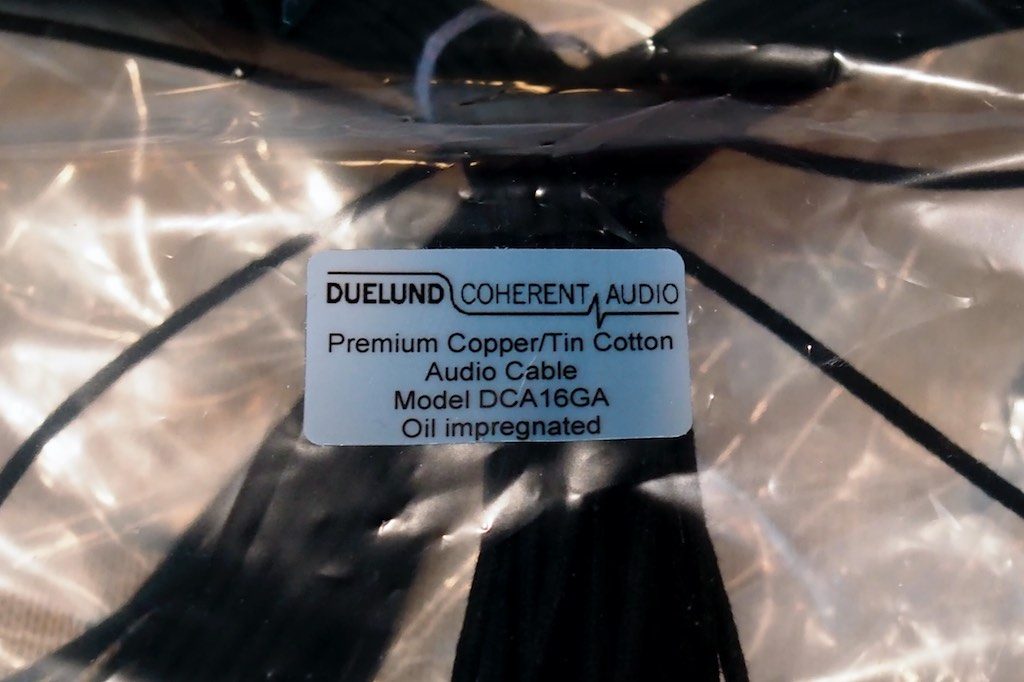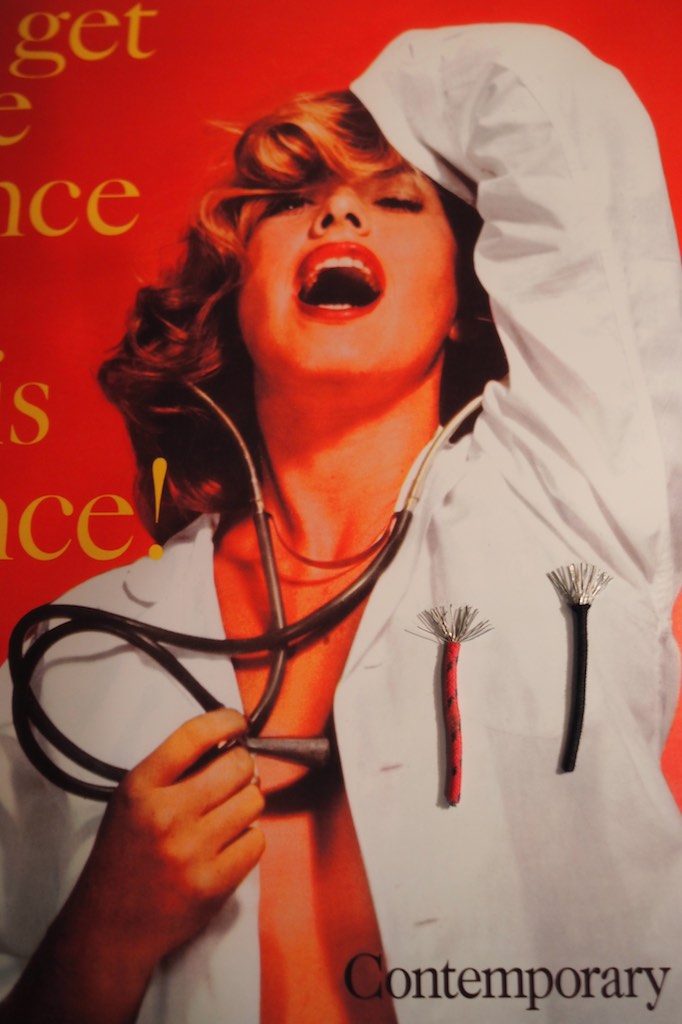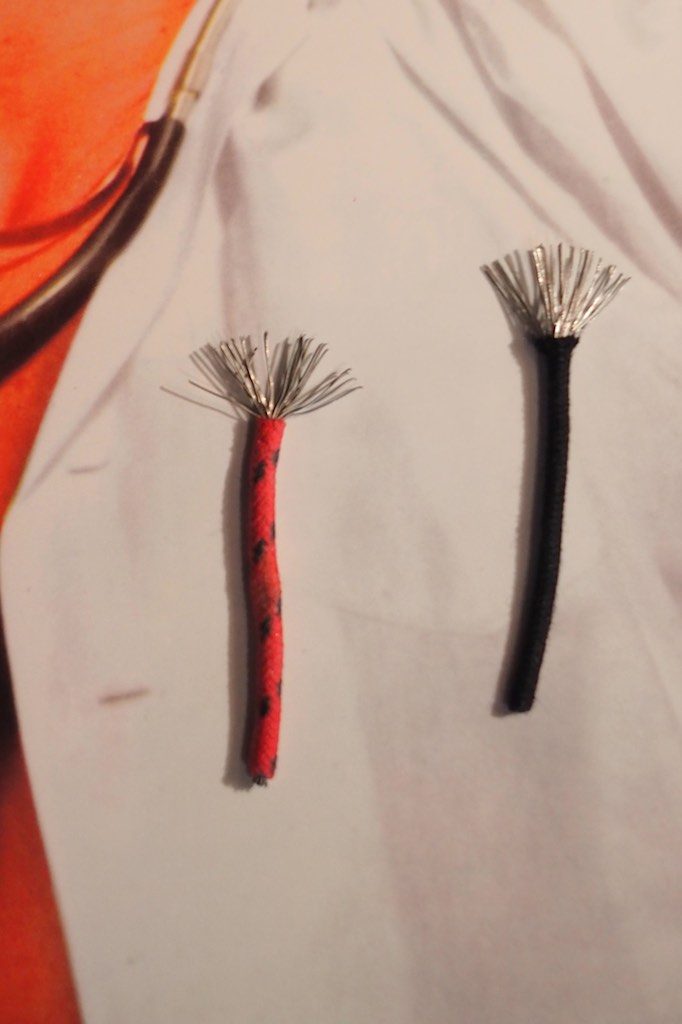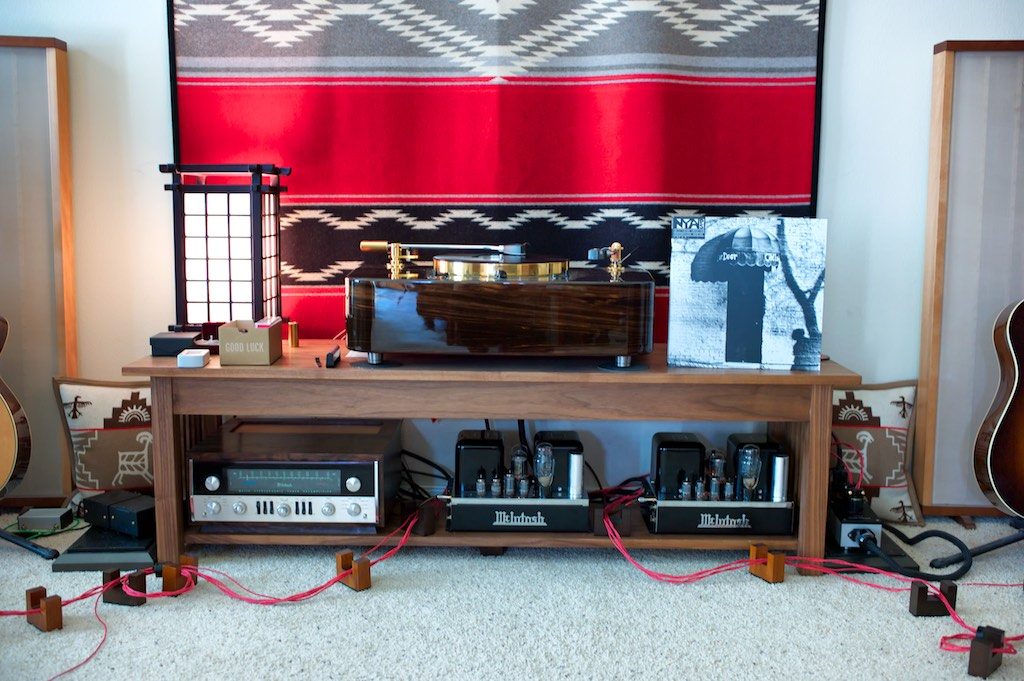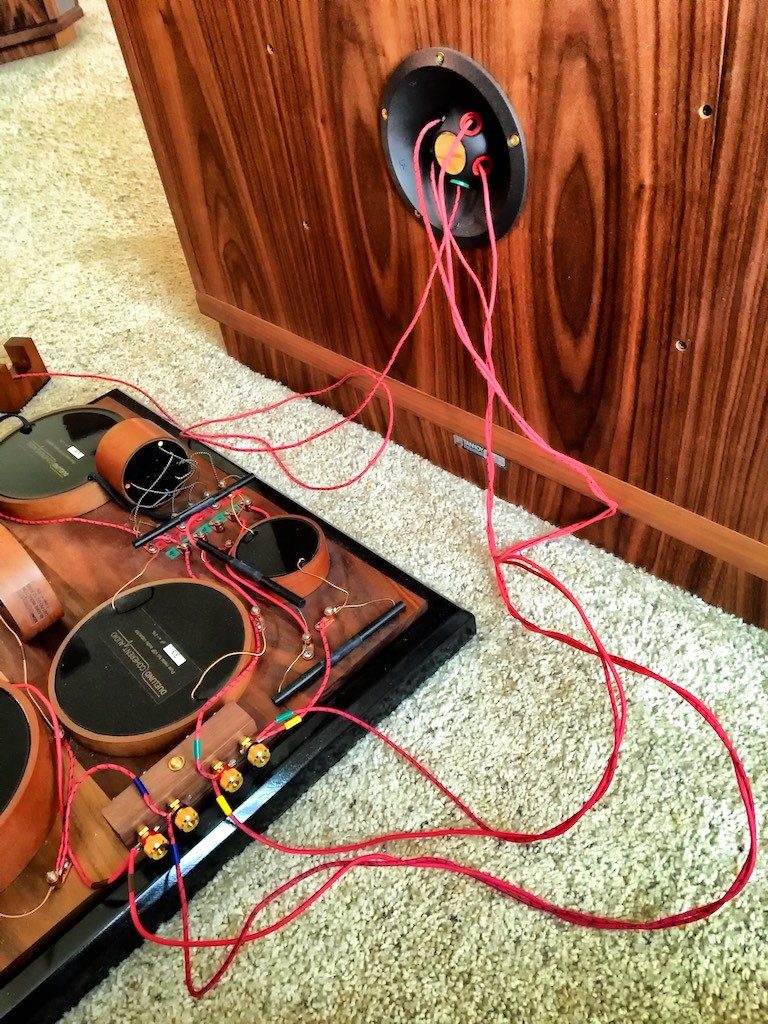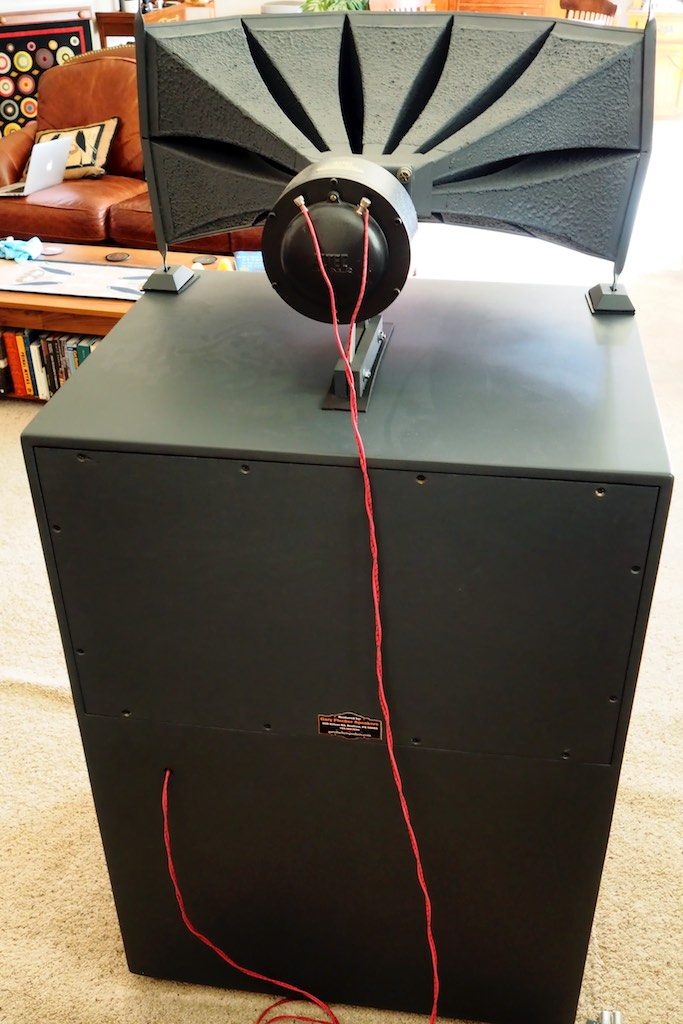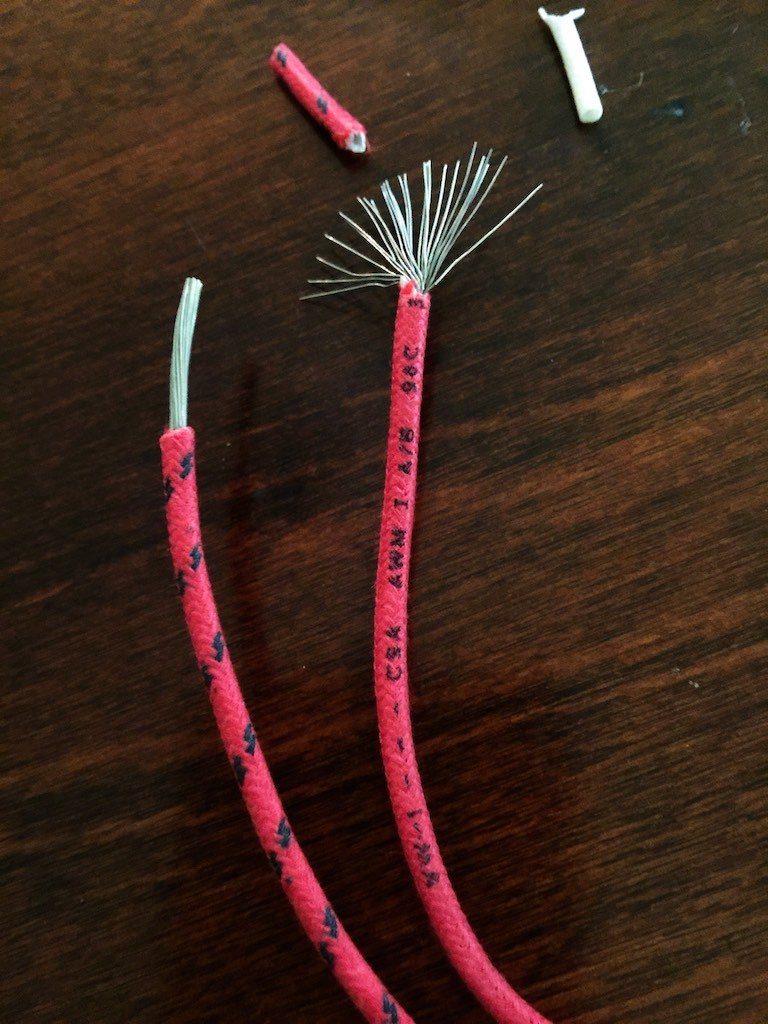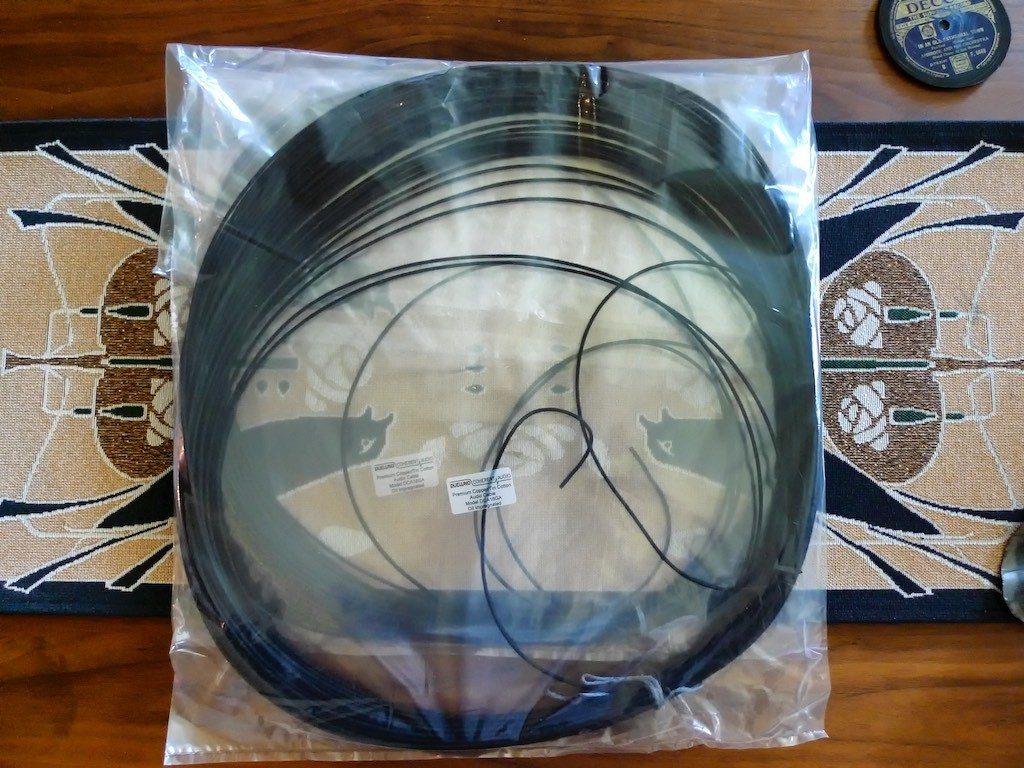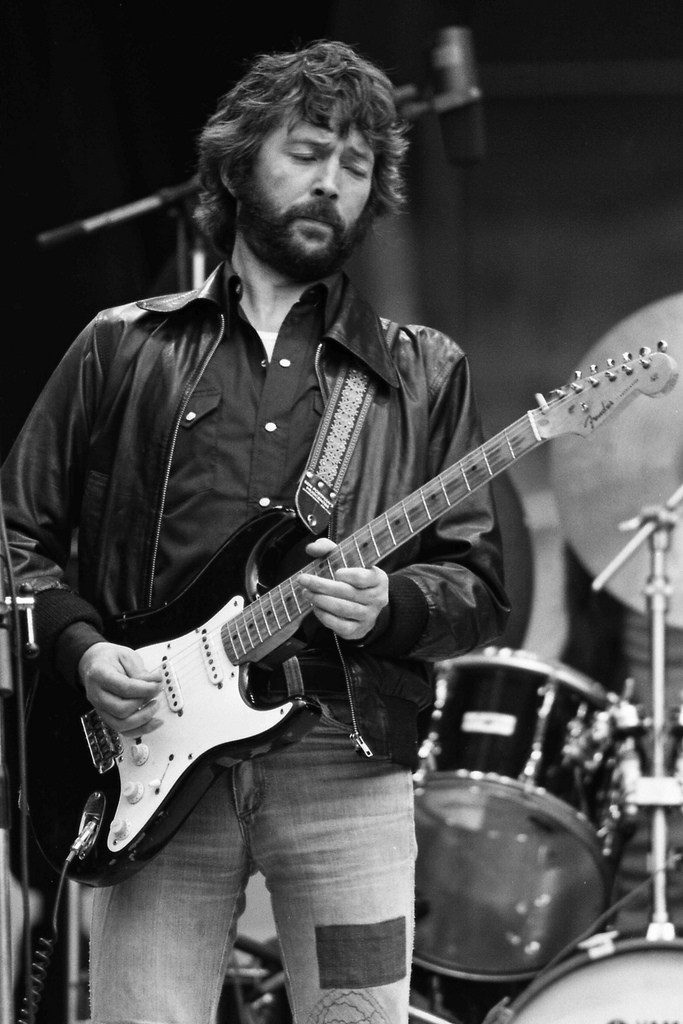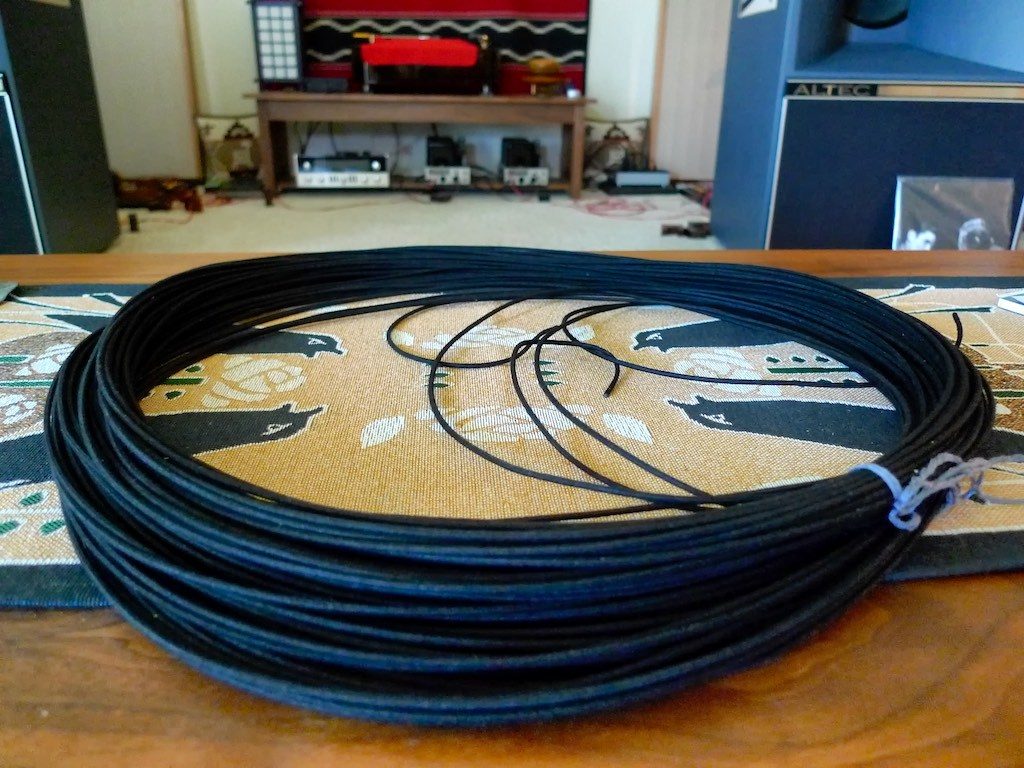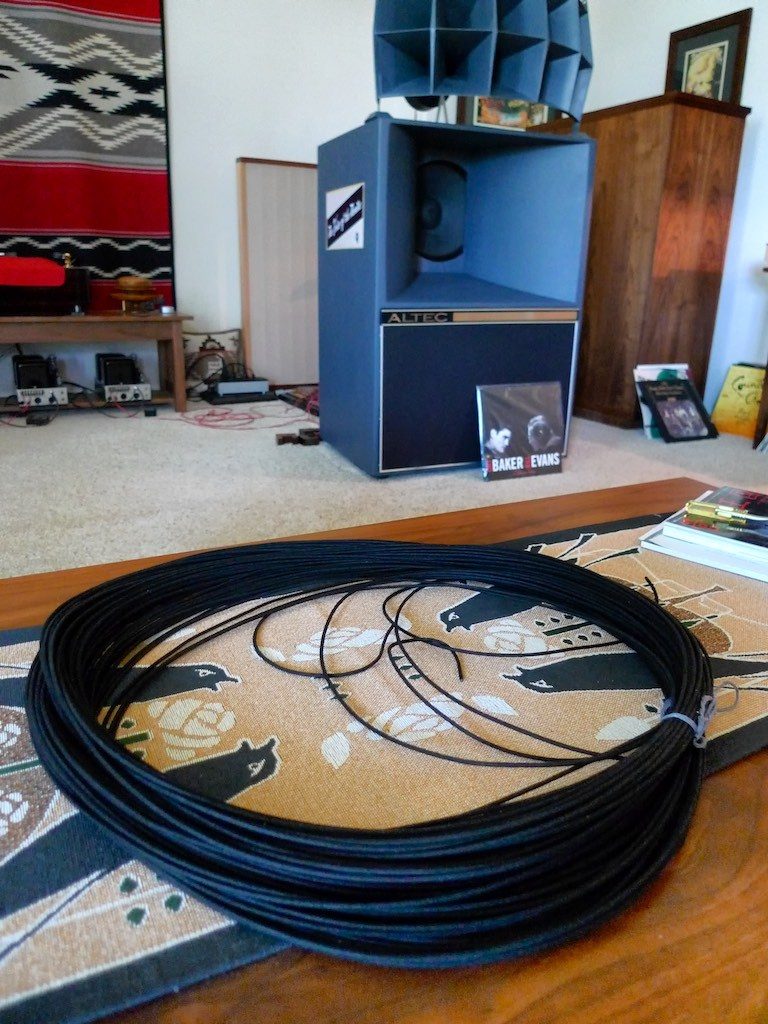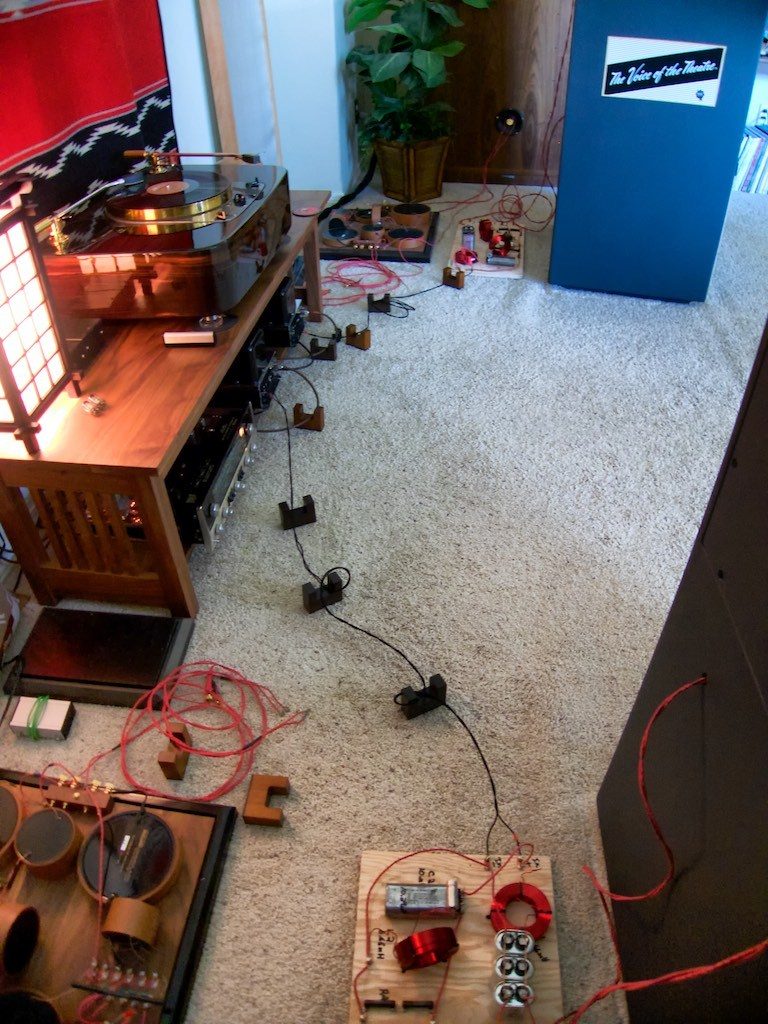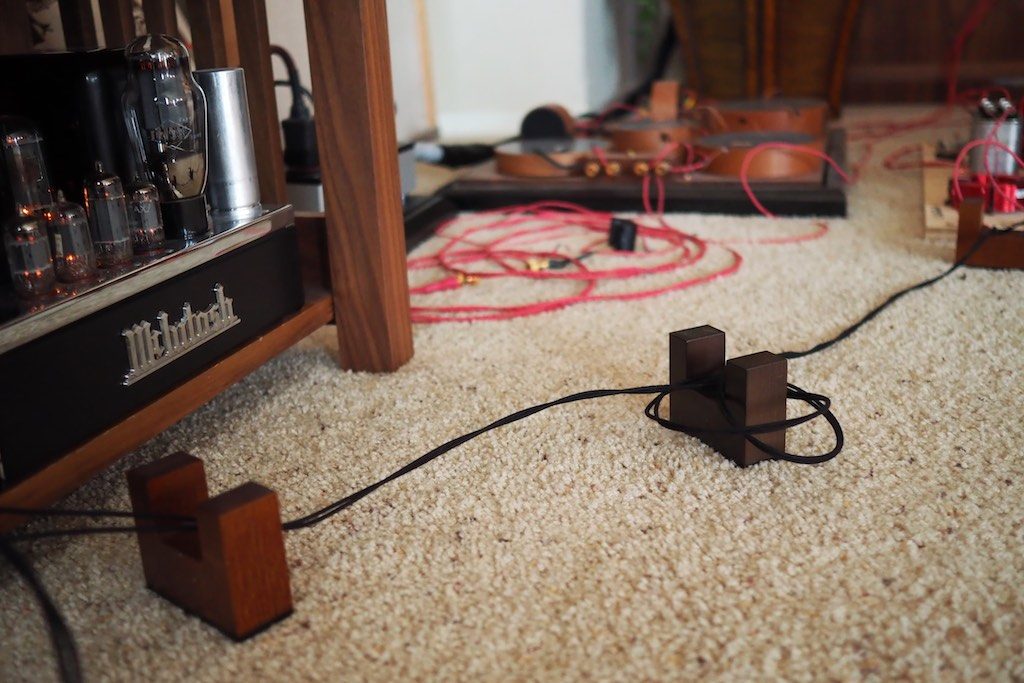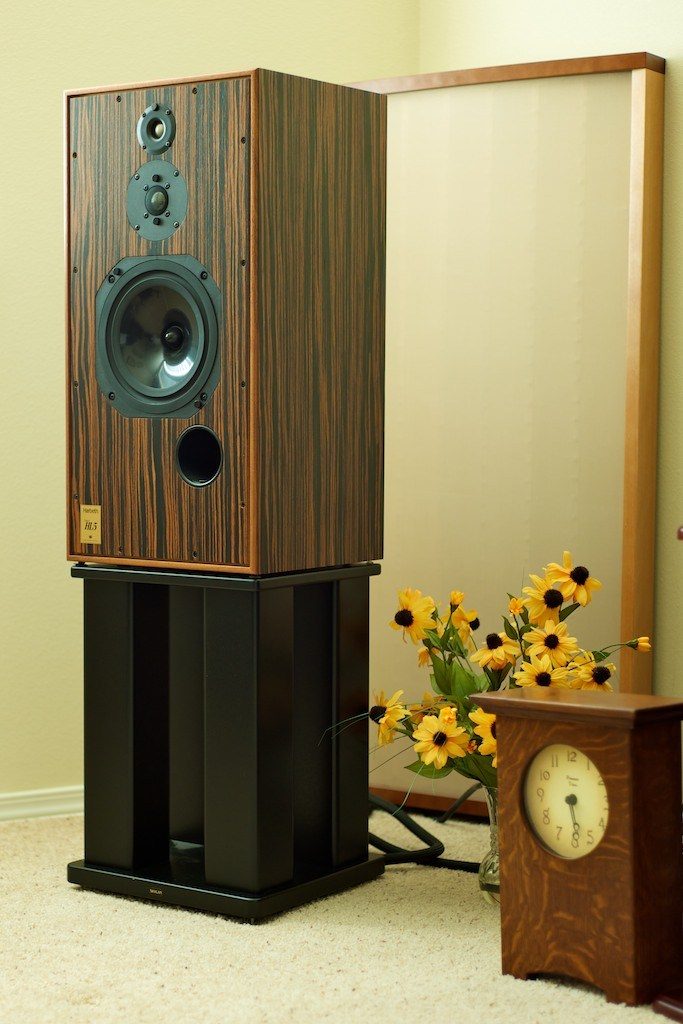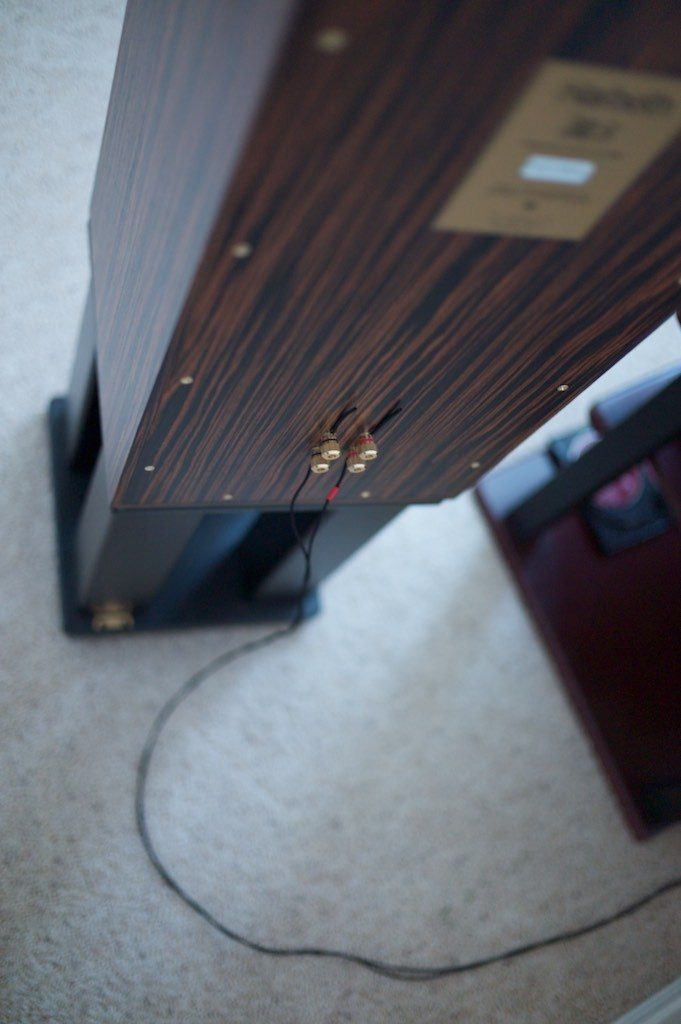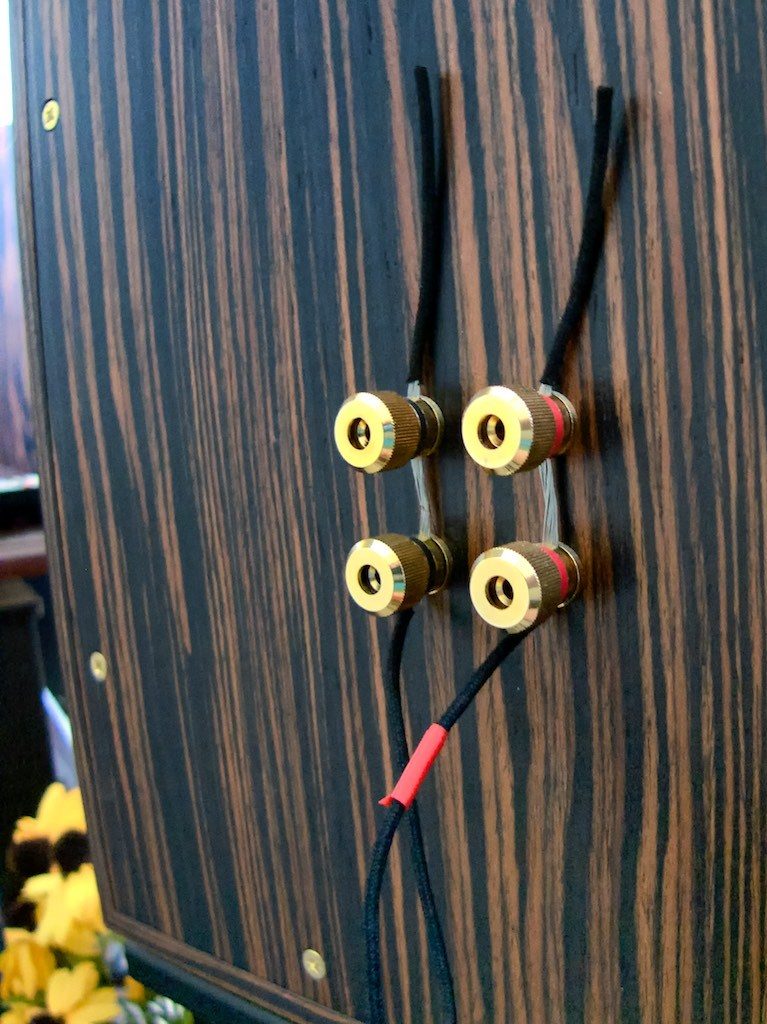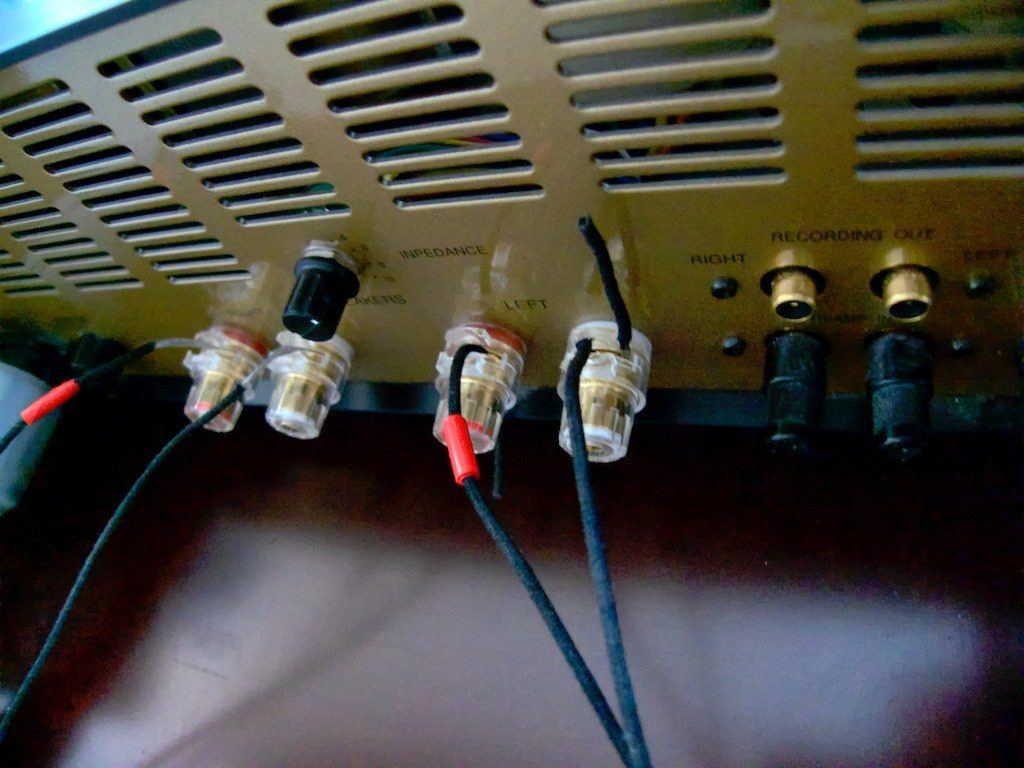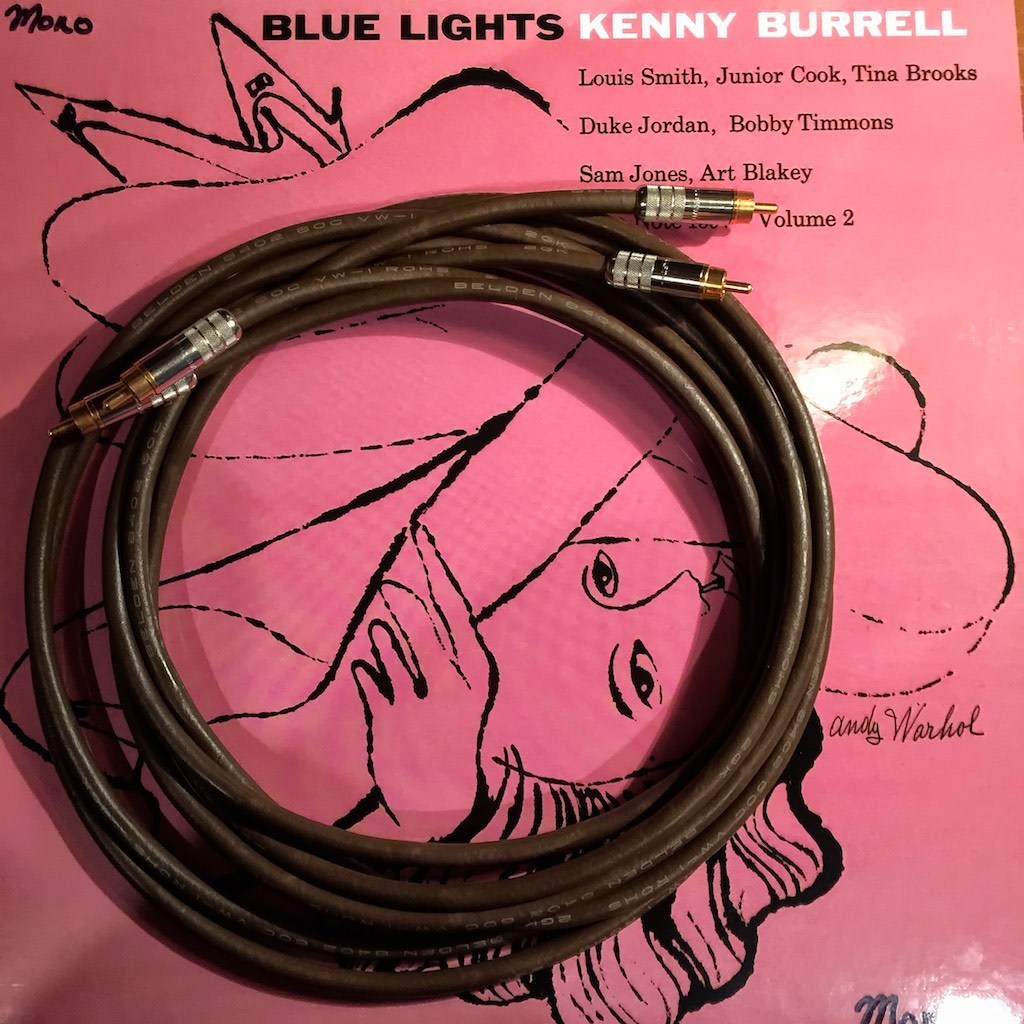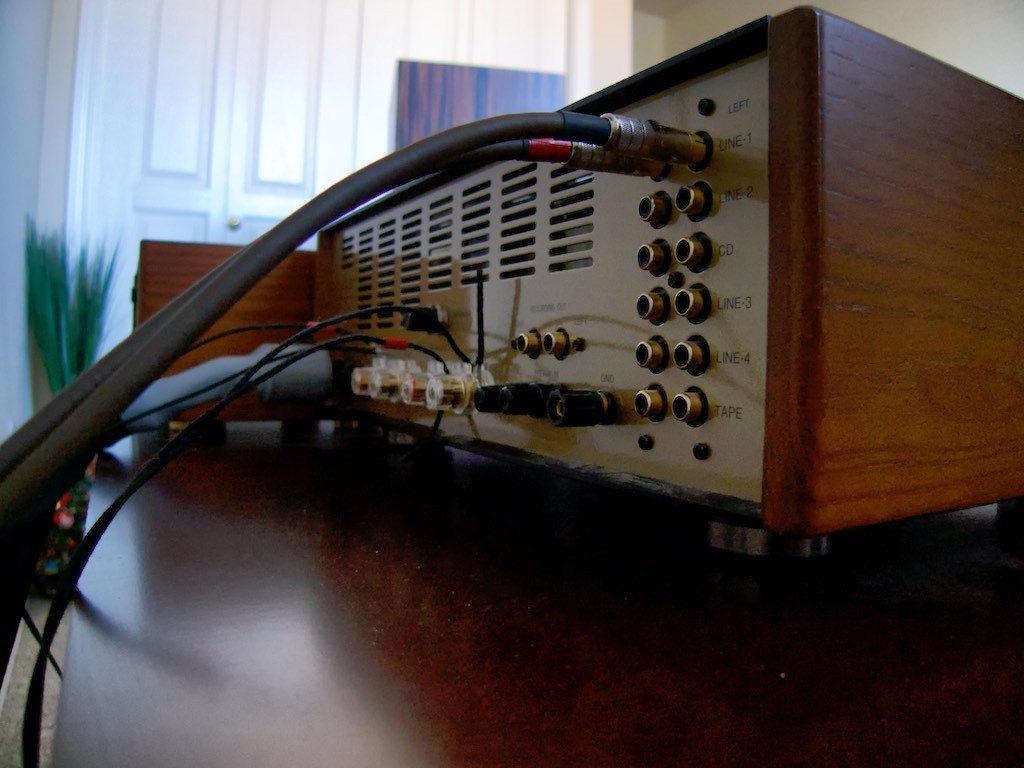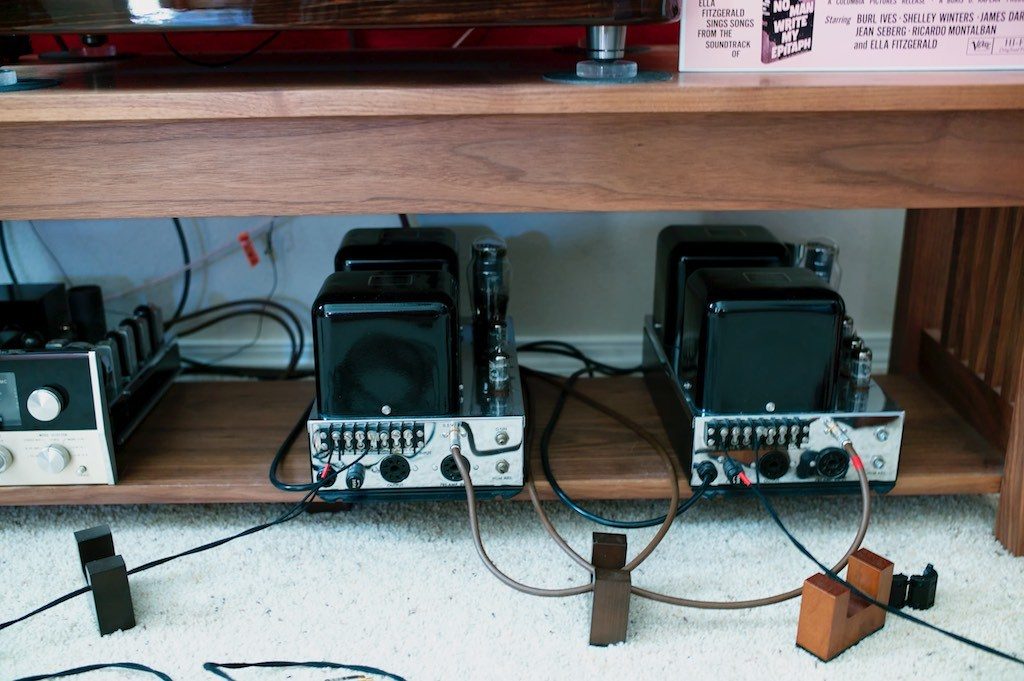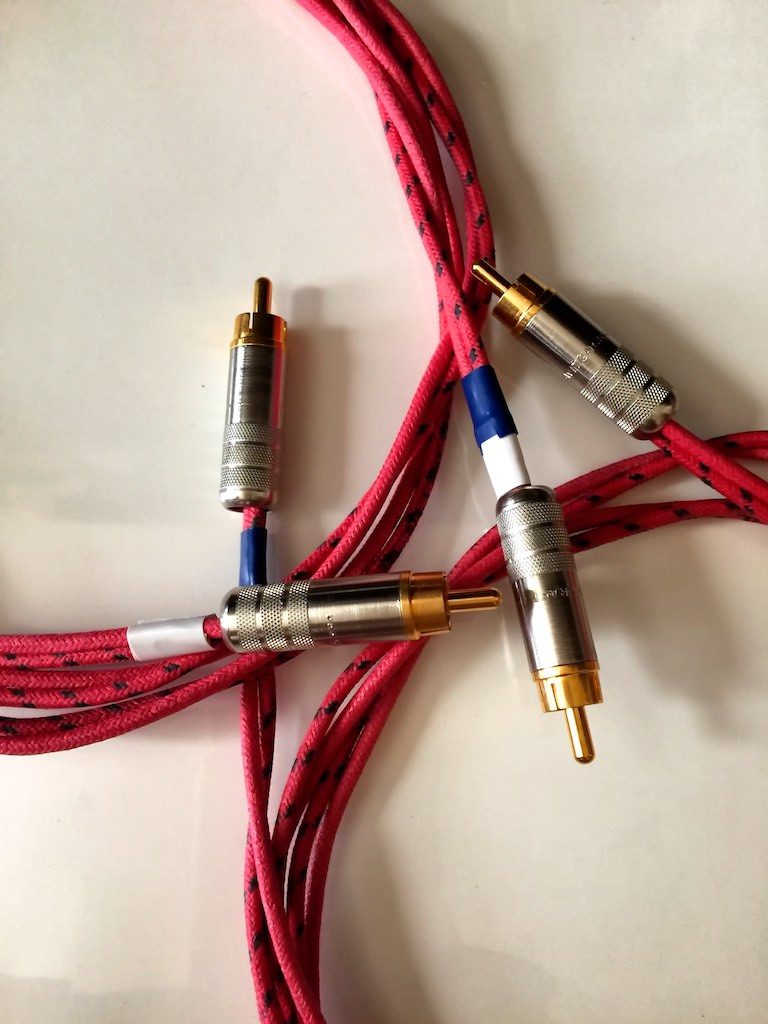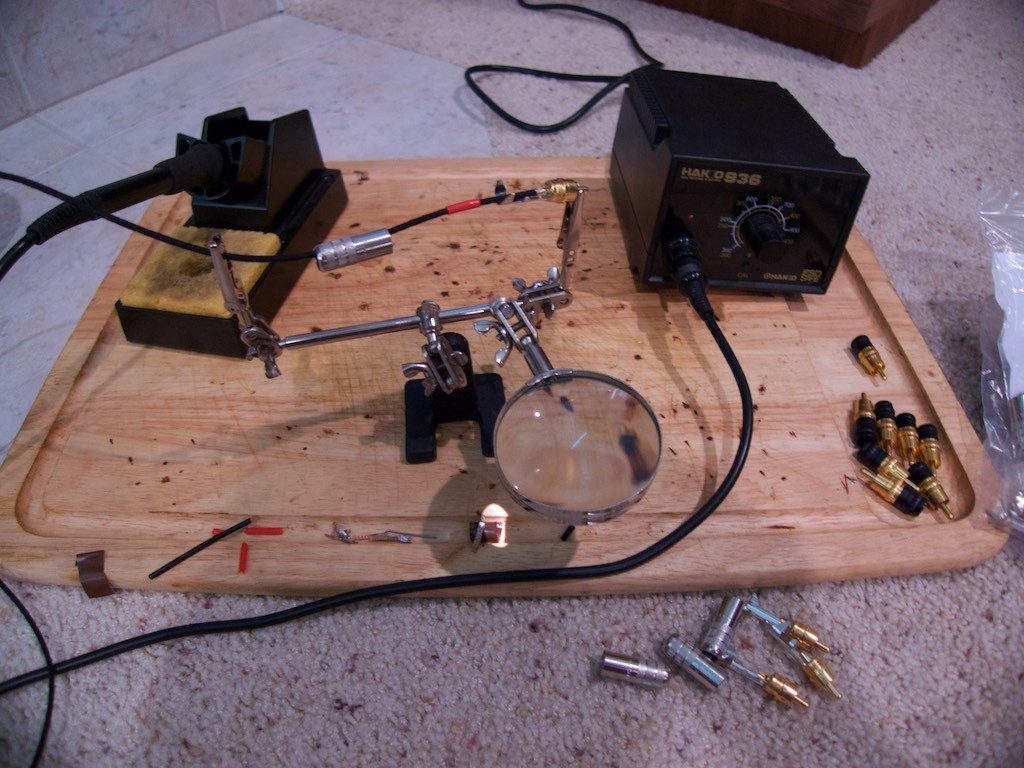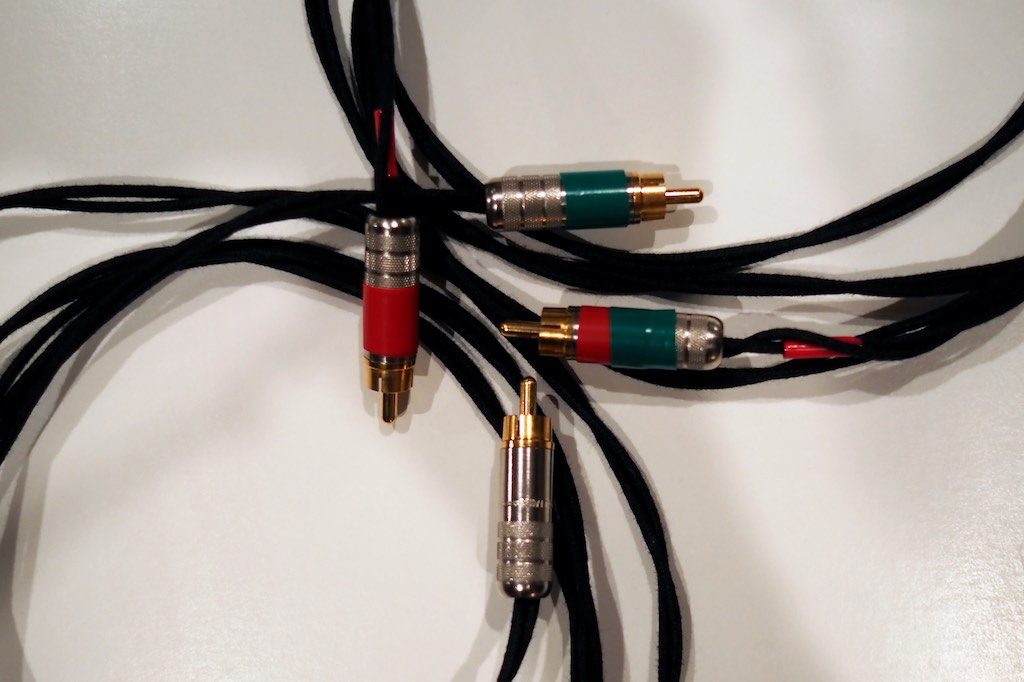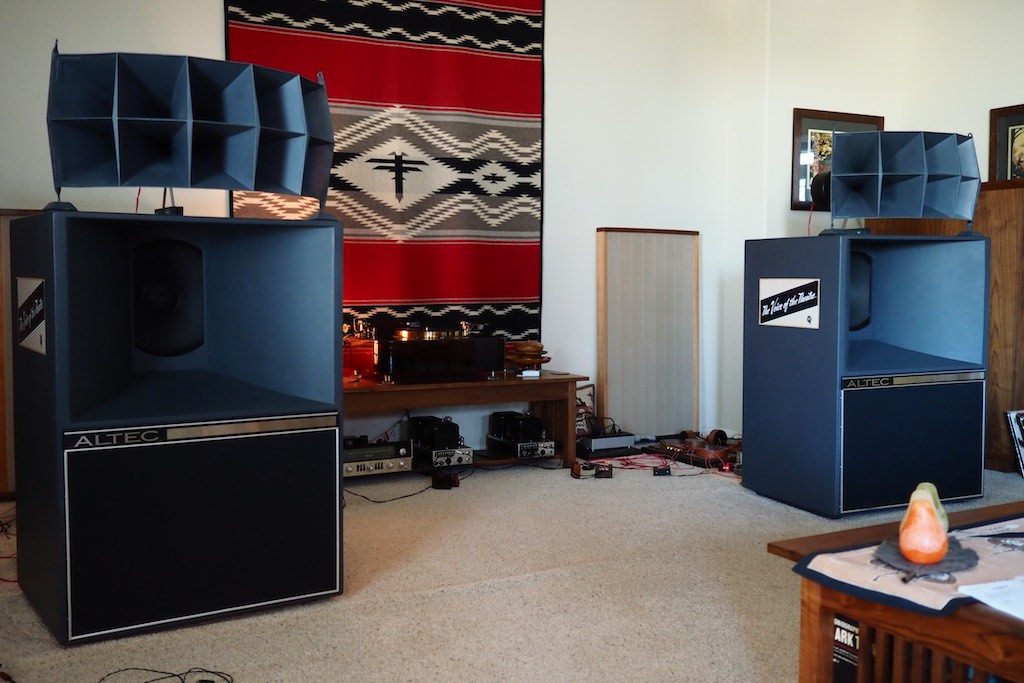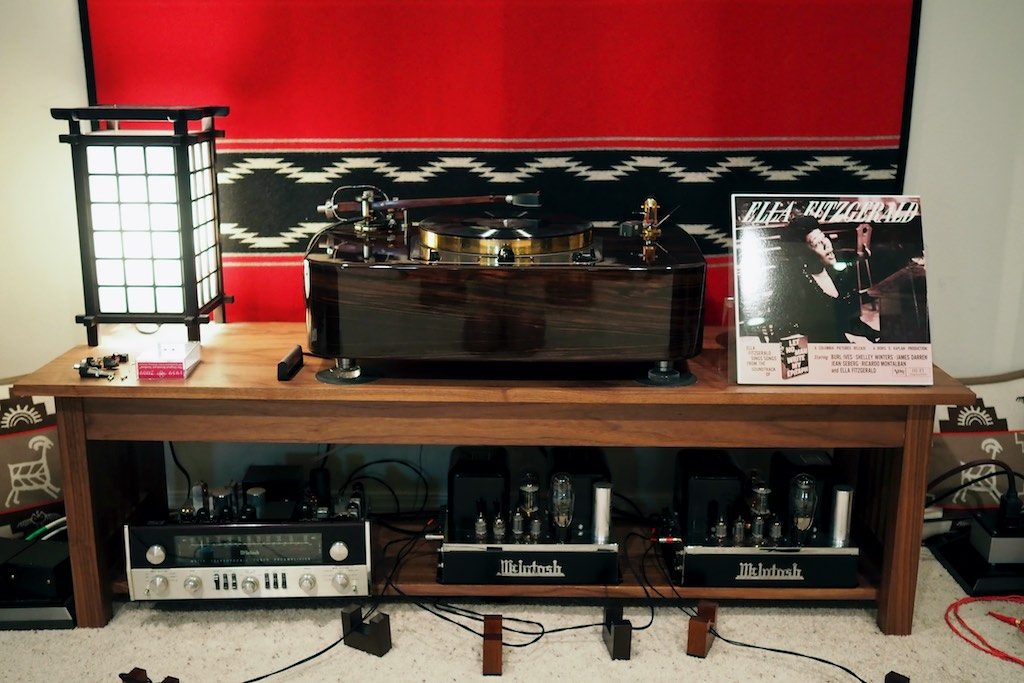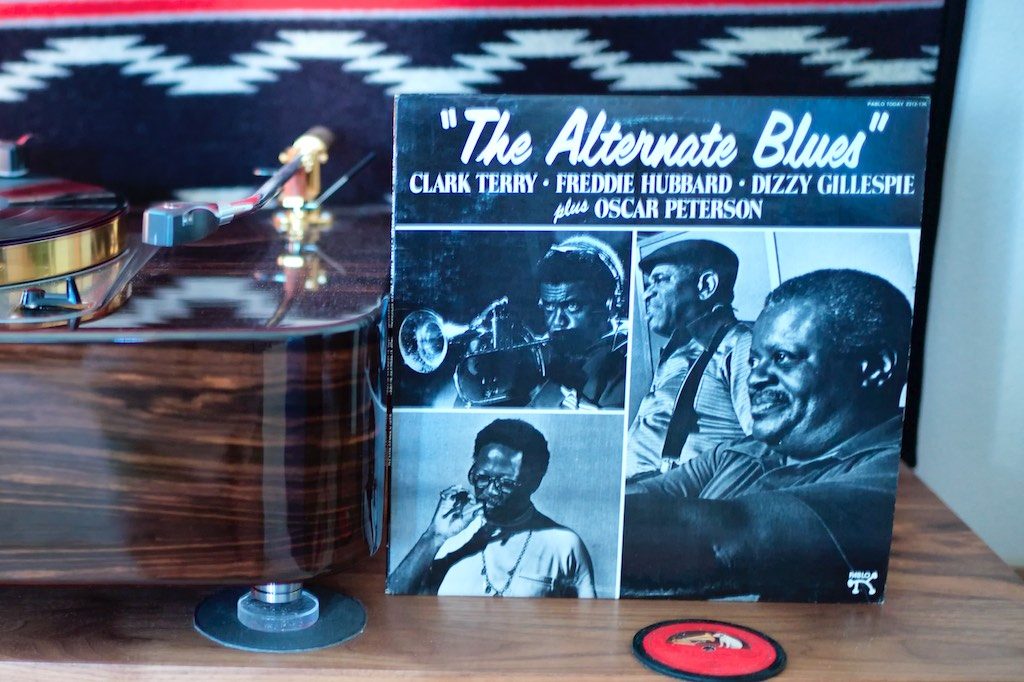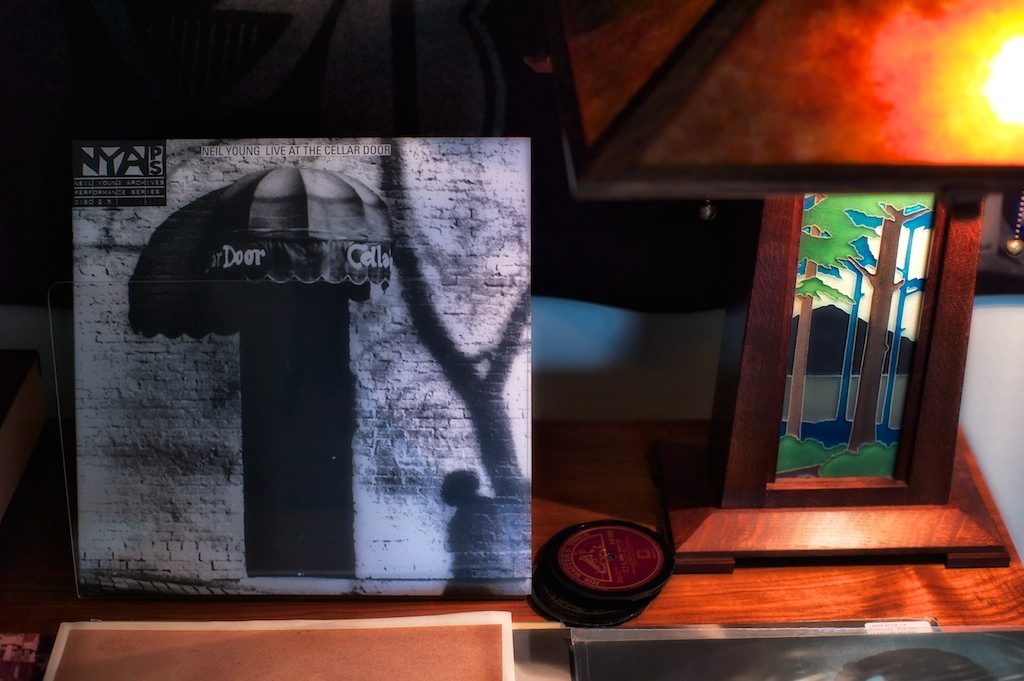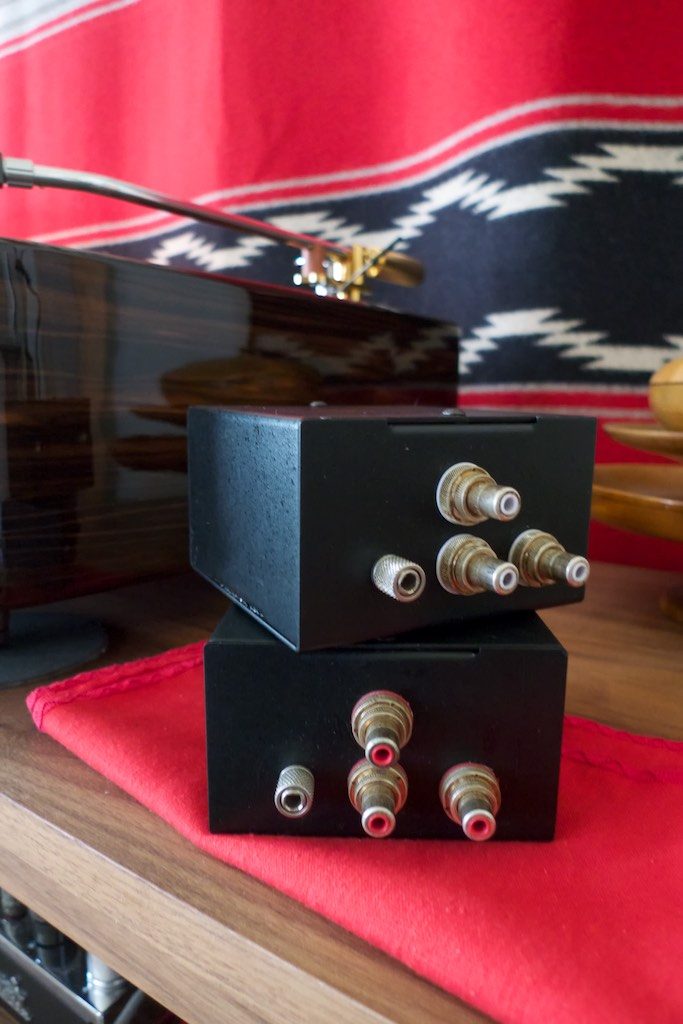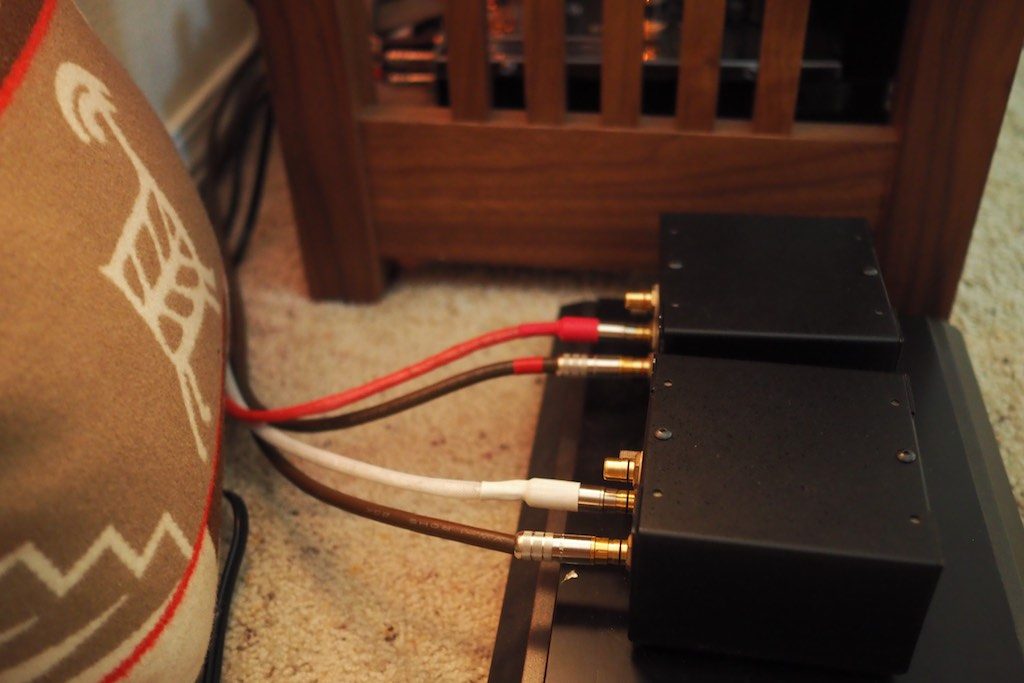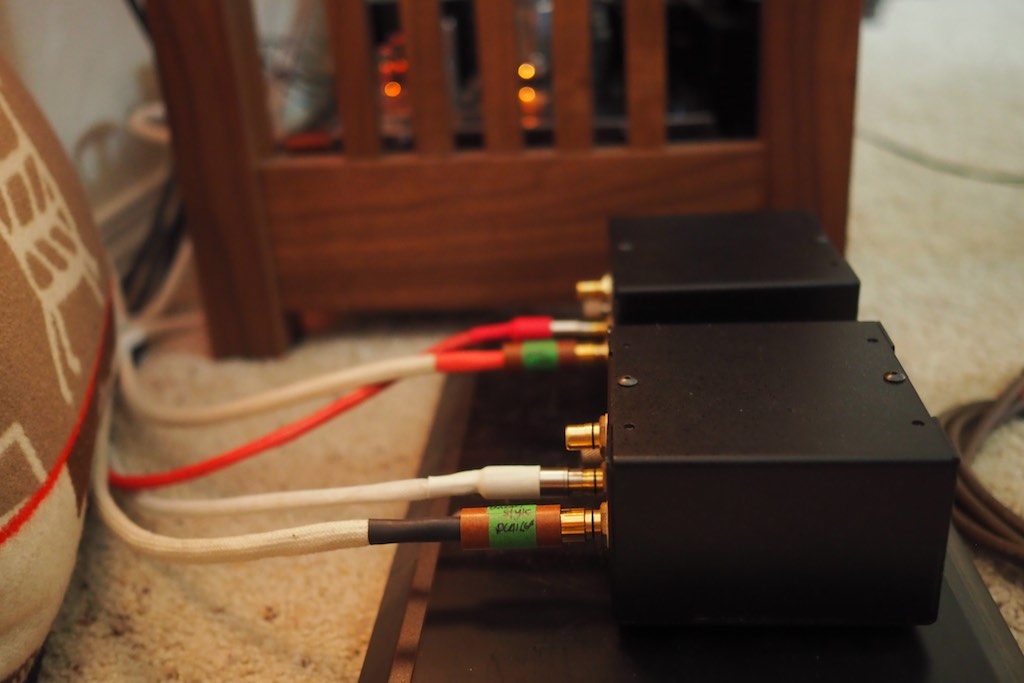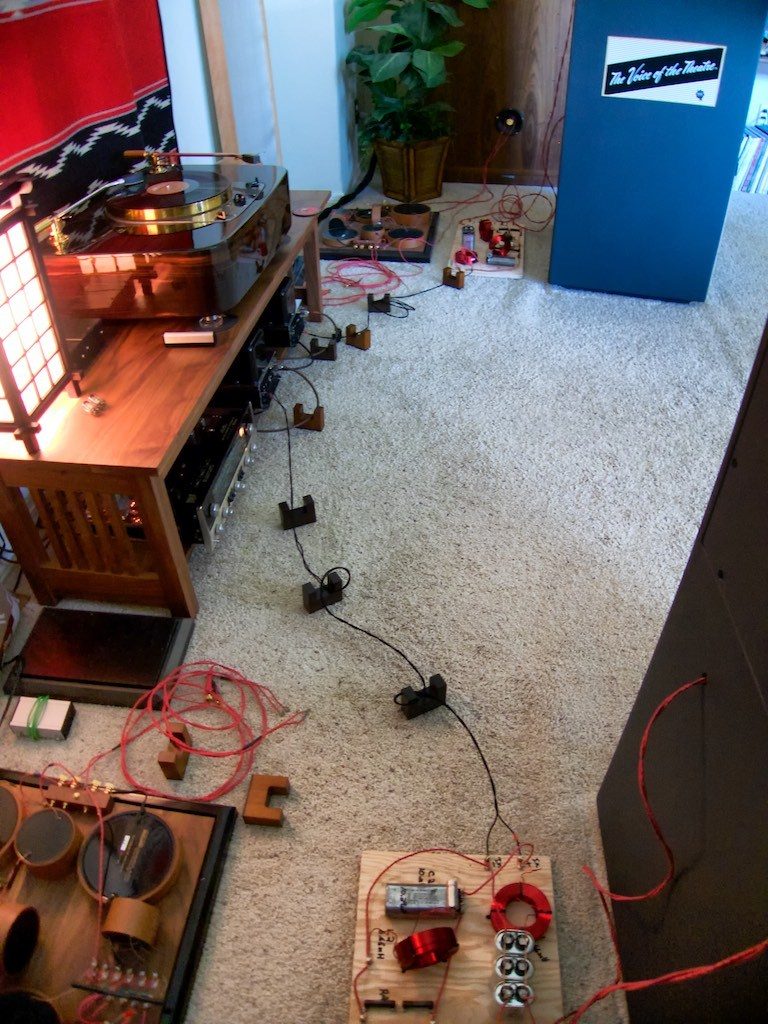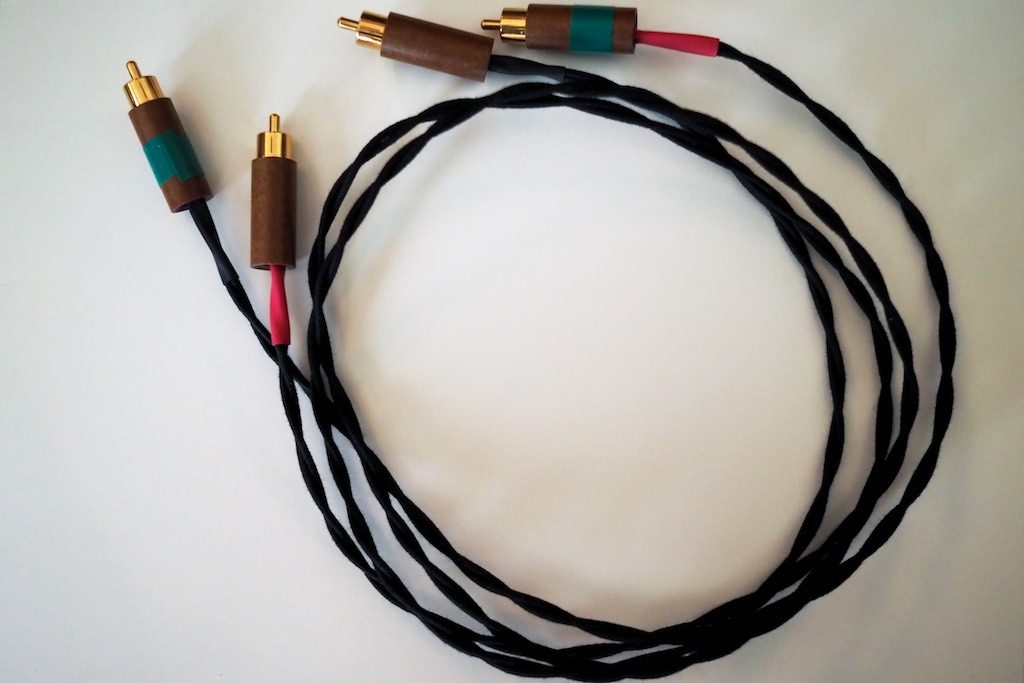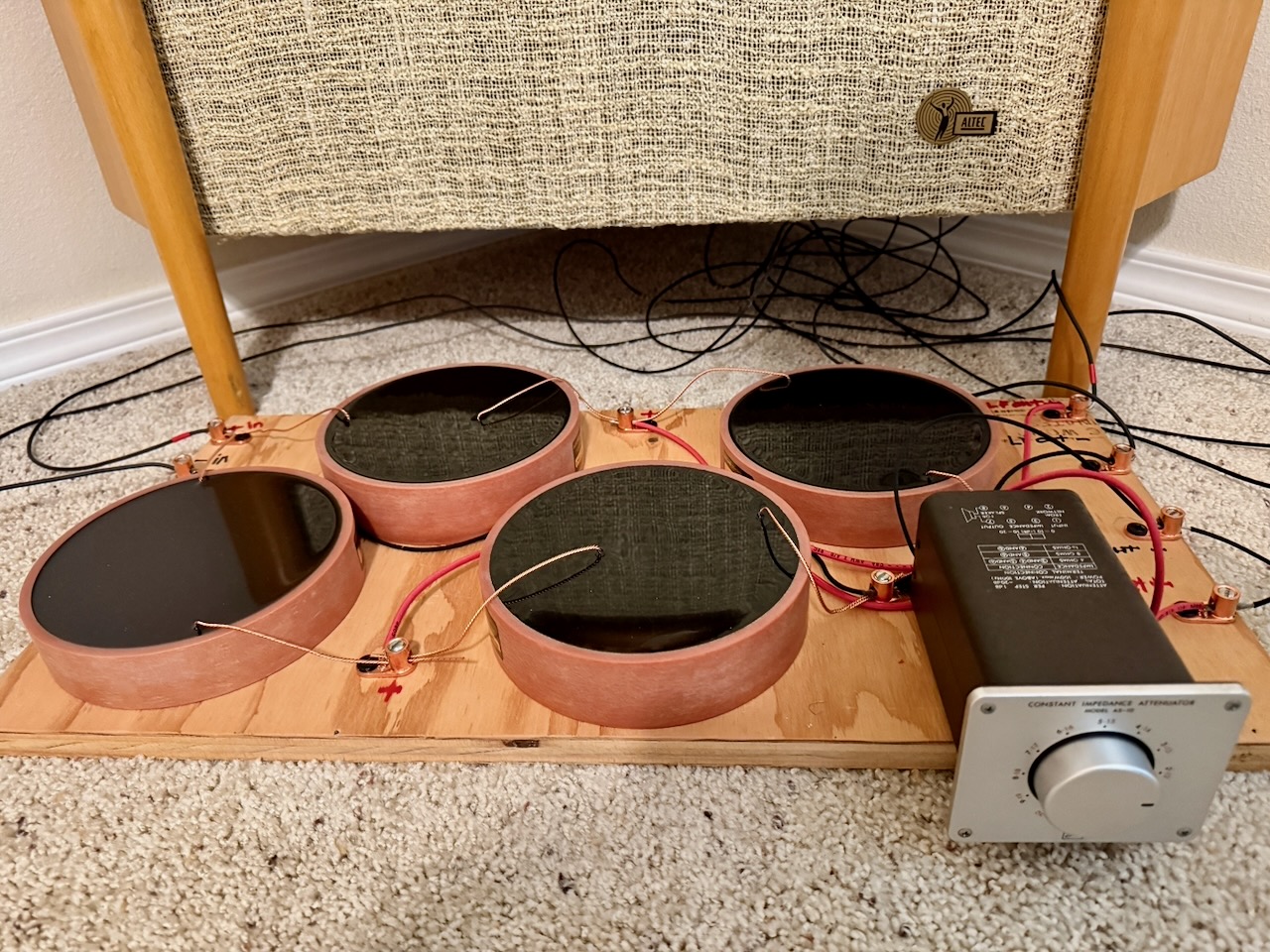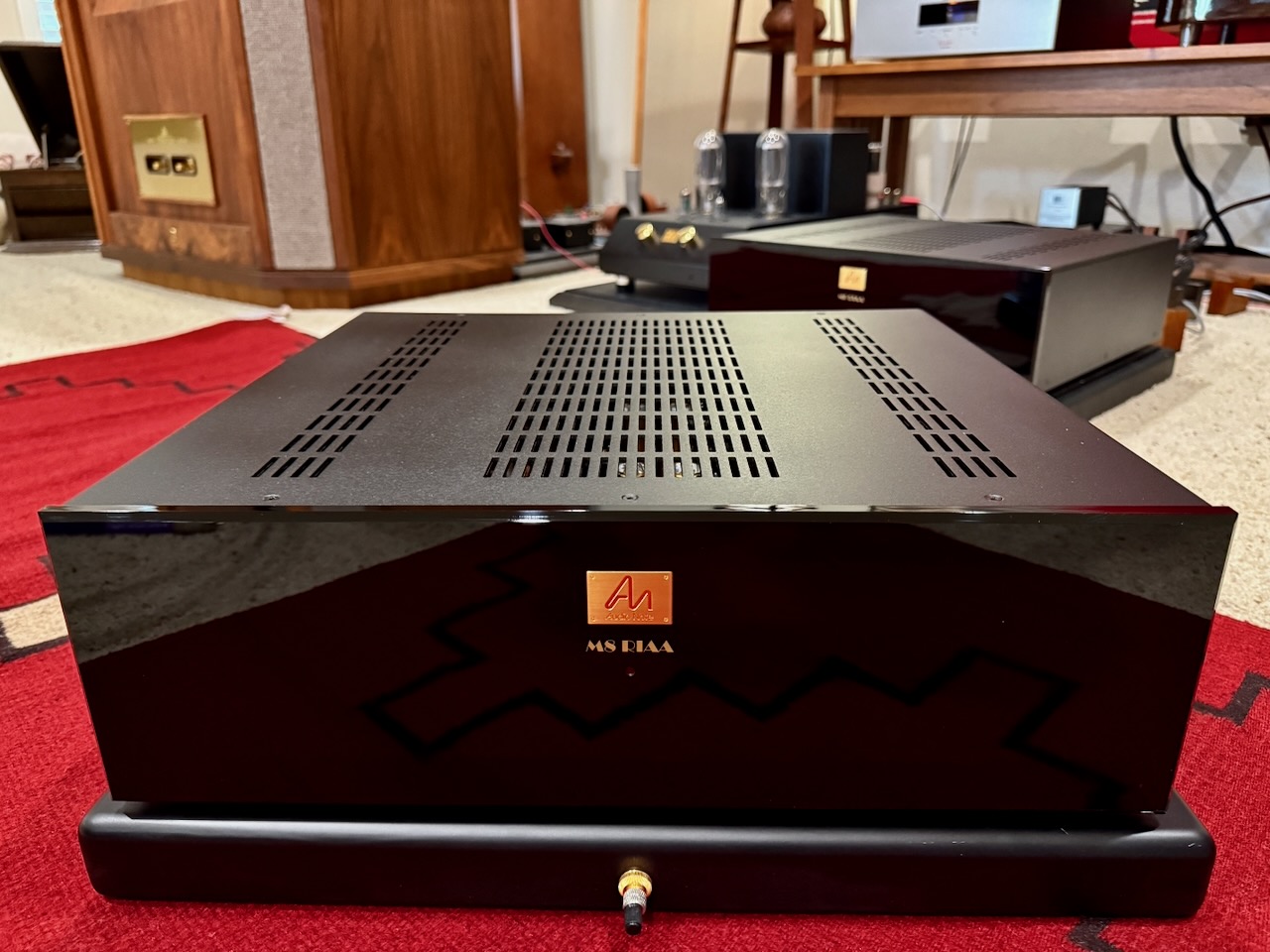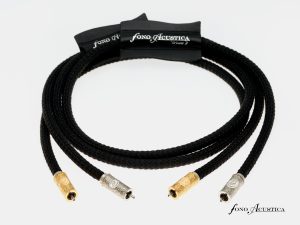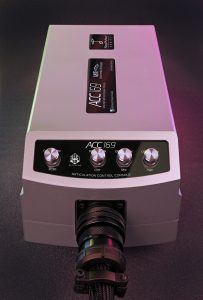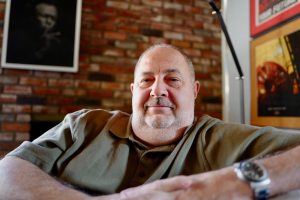Frederik Carøe in Denmark knocked me out with his amazing Duelund Coherent Audio CAST capacitors, inductors, resistors, and autoformers that I wrote about in Issue 70 and Issue 74 of Positive Feedback as part of the Duelund-Westminster Royal SE loudspeaker project, and now Frederik has done it once again with his superb Duelund Coherent Audio DCA16GA premium tinned-copper 'vintage tone' cable, which I have had fantastic results with as both speaker cables and as RCA interconnects.
Frederik worked closely with a specialty manufacturer to develop the 26-strand, 0.25mm diameter, tinned-copper conductors used in the Duelund Coherent Audio DCA16GA wire. Then following Mr. Steen Duelund's axiom that natural materials produce more natural tone, he clothed the DCA16GA conductors in an oil impregnated black cotton dielectric.
Frederik says the oil impregnated cotton dielectric is baked "so people won't get a messy cable" and that "its main role is to make the dielectric anti-static, and the cotton more durable."
Like all Duelund products the DCA16GA wire is hand-assembled with meticulous care and attention to details.
There's quite a good story associated with the arrival of the Duelund Coherent Audio DCA16GA tinned-copper wire that deserves telling, and the vintage Western Electric WE16GA wire that inspired its production.
In the photo above, the Duelund DCA16GA wire is on the right (black), and Western Electric WE16GA is on the left (red). The background is courtesy of my You get more bounce with Curtis Counce jazz album, which depicts quite well what it's like to listen with the Duelund DCA16GA cable connecting your components!
Now the story: Over a year ago now, the delightful Yazaki-san of SPEC Corporation introduced me to the wonders of vintage Western Electric WE16GA tinned-copper wire in the 'Adventures in Real Sound with Mr. Shirokazu Yazaki' article that I wrote about in Positive Feedback Issue 81.
The 'real sound' of that Western Electric WE16GA tinned-copper wire swept me off my feet and I quickly became addicted to its vivid tonal wonders, using it first for speaker cables with my Tannoy Westminster Royal SE loudspeakers, then I rewired my Duelund Coherent Audio CAST crossovers with the WE16GA, and finally I rewired my Westminster's internally with the WE16GA tinned-copper wire. Yes, I really, really, liked what it did for my Westminster Royal SE loudspeakers. In the photo above you can see the spool of WE16GA I bought from Yazaki-san for my Westminster Royal SE rewiring projects.
The Western Electric WE16GA as a vintage wire is no longer in production, and the real thing has gotten difficult to come by as word got out about its incredibly musical 'vintage tone' performance.
Fake WE16GA actually started to appear from disreputable eBay sellers trying to capitalize on the WE16GA's burgeoning popularity, which caused me great dismay, given I was the one who popularized it by writing about it here at Positive Feedback, and at my blog, Jeff's Place.
I enjoyed its tonal characteristics so much that I was starting to get a little bit panicky about running out of the vintage Western Electric WE16GA tinned-copper wire, as not only had I done a complete rewire of my Westminster-Duelund loudspeaker system with it, but I had made speaker cables of it for my vintage 'Stokowski' Altec A7 Voice of the Theatre loudspeakers, and I also wanted to use it for wiring up my vintage Altec-Lansing A5 Voice of the Theatre loudspeaker system project.
I had big plans, but it wasn't looking good for yours truly, as I was quickly running out of WE16GA, and I had a lot more that I wanted to use it for!
During my year-long public affair with the vintage Western Electric WE16GA, Frederik Carøe at Duelund Coherent Audio had been quietly observing the audio community's reaction to its considerable tonal charms, their (and my) dismay at having it become extinct, and Frederik became intrigued with the idea of producing a contemporary Duelund Coherent Audio version of the Western Electric WE16GA, but going the Western Electric one better by utilizing Mr. Steen Duelund's axiom of a natural materials philosophy for the dielectric.
Frederik told me about his idea for a Duelund version of the WE16GA, and you can imagine how excited I was about this development, as well as encouraged by the potential of being rescued from the brink of oblivion of running out of the WE16GA for my planned audio projects.
I had already dissected the vintage Western Electric WE16GA at my blog for my readers, describing its 26-strand tinned-copper conductors, its plastic inner sleeve, and red & black fabric outer covering.
Frederik asked me if I would complete my dissection, and get out my micrometer and measure the diameter of the individual strands that make up the Western Electric WE16GA, which I did, and found each strand was 0.25mm in diameter.
The conductor of the Western Electric WE16GA was composed of twenty-six strands of 0.25mm tinned-copper wire.
Armed with that information, Frederik then worked closely with a specialty wire manufacturer to develop the 26-strand, 0.25mm diameter, tinned-copper conductors that are the heart & soul of the Western Electric WE16GA wire, and then commissioned a production run of the conductors for use in his newly imagined Duelund Coherent Audio DCA16GA wire.
After Frederik received his first production run of the conductors (photo above) for his new Duelund DCA16GA premium tinned-copper cable, he set about wrapping it with his chosen dielectric.
Frederik eschewed the inner plastic insulator and outer fabric covering of the vintage Western Electric WE16GA in favor of a black cotton dielectric that is impregnated in oil and then baked, in keeping with the Duelund philosophy of using natural materials, which Frederik thought would imbue an even more natural and desirable tone to the new Duelund DCA16GA cable than the use of plastics in the vintage WE16GA would allow for.
I'll tell you what, there's been nothing that was more highly anticipated by the readers of my blog (and me) than the Duelund Coherent Audio DCA16GA premium tinned-copper 'vintage tone' cable, with the promise that it could very well become the heir apparent to the now extinct vintage Western Electric WE16GA cable that we all loved so much.
Every time I mentioned the Duelund Coherent Audio DCA16GA at my blog, the hit counter showed dramatic spikes, and my growing anticipation of its arrival made me feel like I was a kid once again, waiting in agony for Christmas morning to arrive, so the family could open the Christmas presents under the tree from good old Santa.
Then that fateful day came when the new Duelund Coherent Audio DCA16GA premium tinned-copper 'vintage tone' cable arrived from Frederik for me to evaluate (photo above).
Would it sound as good as the Western Electric WE16GA, or possibly even better? What if it sounded much worse?
I imagine Frederik was anxiously awaiting the results of my first evaluations of his new Duelund Coherent Audio DCA16GA cable, just as I and my readers were, as he had invested significantly in its production.
Why tinned-copper wire?
I'll get to the evaluations of the new Duelund Coherent Audio DCA16GA premium tinned-copper cable lickety-split, but before I do I want to answer the question that most of you are thinking, which is "Why use tinned-copper wire as a conductor?"
Back in 1950's America, tinned-copper wire, like the vintage Western Electric WE16GA I've mentioned here, was routinely used in industrial applications because electroplating copper wires with tin prevented corrosion and improved strippability, which made for an altogether more durable & reliable wire for industrial use.
Corrosion was an issue back in the 1950's because the common insulators of the day released sulfur peroxide over time, which would then react with the copper conductors to form copper sulfide, which degraded the wires' performance. However, if you tinned the copper wire, the sulfur peroxide released from the insulators couldn't degrade the copper by forming copper sulfide, thus protecting the performance characteristics of the cables.
For the shielded cables of the 1950's, the composition of the shielding made it difficult to strip away from bare copper conductors, so tinned-copper conductors were used, as they were easier to field-strip in preparation for use.
So the origin of tinned-copper wire was related to the purely practical reasons of preventing corrosion and easing strippability, making the wire more durable, reliable, and easy to handle in industrial applications.
Over time new wire insulators were developed that didn't corrode bare copper conductors, and new shielding materials were developed that made strippability over bare copper conductors a relative breeze.
Those new materials for insulators & shielding meant that the tinned-copper conductors that were so expensive to manufacture began to fade from the scene, with the forces of penny-pinching capitalism covering them in the sands of time, and largely erasing them from people's memories.
What is 'vintage tone'?
For audio use, most of you are probably familiar with contemporary speaker cables & interconnects that are made with copper, silver, or even gold wire, and know that each of those conductor materials have their own unique tonal signatures.
I'm guessing most of you haven't had much exposure to tinned-copper wire yet, unless of course you happen to have a hobby that involves restoring or hot-rodding vintage audio gear, which tends to be chock-full of tinned-copper hookup wire. The same is true for vintage electric guitars & guitar amplifiers, which also used tinned-copper wire in their manufacturing.
My vintage McIntosh electronics, for example, are wired internally with a standard industrial wire of their day, the vintage Western Electric tinned-copper wire. It is unlikely that McIntosh's choice of tinned-copper wire for use in their vintage electronics was related to the sound quality of the wire in the way we think about it today, but more likely for its industrial qualities of being corrosion resistant, and being easily strippable during the manufacturing process.
Now if copper, silver, and gold wire has a signature tonal balance when used for internal component wiring, speaker cables, or interconnects, etc., then it stands to reason that tinned-copper wire would also have its own signature tonal balance, which it does.
It was not the vintage audio guys that were the first to realize that there was something very special about the musical tonality of tinned-copper conductors, rather it was the vintage electric guitar guys, and they referred to the tinned-copper wire used in vintage electric guitars & guitar amplifiers as 'vintage tone' wire.
The guitar guys called it 'vintage' wire for the obvious reason of it being found in vintage electric guitars and their amplifiers, and they added 'tone' to the description because they wanted to denote that vintage tinned-copper wire had superb tonal properties that contributed to the superiority of tone those vintage electric guitars and their amplifiers had compared to modern production equipment.
So thus the terminology of 'vintage tone' wire came into being, and it is the guitar community that I borrowed the term from.
As a result of the realization of the superb musical qualities of the tinned-copper 'vintage tone' wire compared to the bare copper wire used in contemporary electric guitars and their amplifiers, an entire cottage industry sprang up among the electric guitar guys for modifying modern production electric guitars & electric guitar amplifiers in an effort to recapture the 'vintage tone' of those fantastically musical vintage electric guitars and their amplifiers, like Eric Clapton's Fender Stratocaster 'Blackie', for example (above).
Now almost every major electric guitar manufacturer has recognized this trend, and have gotten on board in recapturing their historic 'vintage tone' with 'vintage tone wire', 'vintage tone caps' (a story for another time), and 'vintage tonewoods'.
If you're interested in reading more about the 'vintage tone' phenomena, you can read a lot more about it on my blog, just search on 'vintage tone' and have fun reading!
This 'vintage tone' trend went largely unnoticed in audio circles until recently, when in a parallel audio universe, the discriminating Shirokazu Yazaki, or Yazaki-san, as the readers of my blog know him, rediscovered the lost artistry of tone that tinned-copper conductors so easily provide, but now for audio use.
It was Yazaki-san who introduced me to the 'vintage tone' of the tinned-copper Western Electric WE16GA wire for speaker cables, and the shielded tinned-copper conductors of Belden 8402 microphone cable for interconnects (more about the Belden in a moment), and frankly, it changed the way I think about high-performance audio cabling. Yazaki-san likes to refer to the tonal qualities characterized by those tinned-copper conductors as 'real sound', and I would agree that their musicality & sonics is much more like what we hear & feel from real live music than is bare copper or silver wire.
When I say 'vintage tone' wire to an audiophile it usually conjures up a mental image of a warm, mid-range centric, modestly resolving, pleasantly musical wire, that is not really suitable as a high-performance 'audiophile' cable.
When I say 'vintage tone' wire to an electric guitar guy it conjures up a mental image of a wire that provides extremely vivid tone color, superb dynamic response, can start & stop on a dime during melodic improvisation, allows notes to decay beautifully, and has an irrepressible musical expressivity & tonal beauty to it that is not easy to quantify, but is easy to feel, as there's just something special about the way you can play music with it.
When I say 'vintage tone' to you for the purposes of this article, what I'm talking about is much closer to what the vintage electric guitar guys like about tinned-copper 'vintage tone' wire, with its vivid tone color, superb dynamic response, melodic sophistication, harmonic complexity, musical expressivity, and level of emotional engagement, but there are other aspects to 'vintage tone' performance in audio terms that are relevant, like its spooky imaging presence, natural live-like level of resolution, the generous portrayal of soundstage & soundspace, and a presentation of a live-like timbral complexity.
Duelund Coherent Audio DCA16GA Speaker Cables for My Vintage Altec A5 Voice of the Theatre Loudspeakers
When the DCA16GA arrived from Frederik, I quickly unpackaged it and got busy making up a set of speaker cables for my vintage Altec-Lansing A5 Voice of the Theatre loudspeaker project so I could give them a listen.
Out came the Western Electric WE16GA and in went the Duelund Coherent Audio DCA16GA.
I attached the bare wire ends of the DCA16GA to my hot-rodded vintage McIntosh MC30 monaural amplifiers on one end, and my in-progress breadboard crossovers for the my vintage Altec-Lansing A5 Voice of the Theatre loudspeakers on the other end.
One thing that experience has taught me over the last year about tinned-copper conductor cables like those in the WE16GA, is that they can sound brash and forward until they get adequate run-in time in a system (a 100 hours or more), or adequate conditioning time on an audiodharma Cable Cooker™ (about 4 days).
Hint: I've found Alan Kafton's audiodharma Cable Cooker™ indispensable in speeding up the run-in time for my cables, and for getting the most out of them, whatever kind of cables they are, and as a bonus it costs less than a pair of hoity-toity interconnects.
I was steeling myself for my first listen to the Duelund DCA16GA, and was telling myself that even the Western Electric WE16GA sounded a little rough & brash until it settled down, and then it unfolded over time to reveal a remarkably musical presentation that brings the music to life.
However, when I put the Duelund DCA16GA into the system as speaker cables, with no conditioning at all, they didn't sound brash & forward like the Western Electric WE16GA did with no time on it.
What did I hear? Well, compared to the Western Electric WE16GA, I heard all of the considerable goodness of well run-in WE16GA, but the Duelund DCA16GA had an overall richer presentation, it sounded smoother, more spacious, had more intense tone color, it was more transparent (and at the same time more natural sounding!), with images that had more presence, as well as a superb portrayal of tempos, melodies, rhythm, and dynamics. Those are all attributes that push my buttons, so I was very excited about what I was hearing.
Essentially, I heard everything that I really like about the vintage Western Electric WE16GA, but everything was better with the Duelund DCA16GA. Everything, both musically & sonically.
Success number one!
Duelund Coherent Audio DCA16GA Speaker Cables for My Harbeth Super HL5 Loudspeakers
The Duelund DCA16GA speaker cables were a complete success with my vintage Altec A5 Voice of the Theater loudspeakers, but I wondered how well the DCA16GA would perform on my Harbeth Super HL5 loudspeakers, which are a more contemporary loudspeaker favorite of mine.
Back 10 years ago now, when I first tried the combination of the Leben CS600 integrated amplifier (and the RS-30EQ phono stage) with the Harbeth Super HL5 loudspeakers during a review for SixMoons, I was so impressed with the immense musicality of their combined performance that I sold my much more expensive reference system that I had at the time, and replaced it with the Leben & Harbeth's. I've never regretted it.
The strength of the Harbeth loudspeakers is their natural, nuanced, and emotive performance in smaller rooms, and to this day Harbeth's remain my favorite commercially available small room loudspeakers. It doesn't really matter which Harbeth's you have either, as my big Harbeth Monitor 40.1's worked as well in my small 11-feet x 12-feet x 9-feet (ceiling) extra bedroom as do my smaller Harbeth Super HL5 loudspeakers. In fact, now when I think back on it, the big M40.1's even worked better, and contrary to what you would expect, the smaller room helps keep the prodigious bass output of Harbeth's in check, and keeps them from becoming boomy, as was their tendency in my larger rooms.
Just as for the Altec A5 Voice of the Theatre loudspeakers, I cut four lengths of the Duelund DCA16GA cable to the correct length for my Harbeth-Leben system, then I cut the cotton dielectric so that when I pulled it back I had just the right spacing between the binding posts, and then I threaded it through and tightened them down, as you can see in the photo below.
I used the same technique for attaching the Duelund DCA16GA to the binding posts of my Leben CS600 integrated amplifier, below.
Just as with the Altec A5 Voice of the Theatre loudspeakers, the Duelund DCA16GA cable displayed all of that well run-in Western Electric WE16GA goodness with zero run-in time on them.
From the Duelund DCA16GA I heard the same rich presentation, realistic textures, spaciousness, vivid tone color, timbral realism, imaging prowess, and vivacious portrayal of tempos, melodies, rhythm, and dynamics, that the vintage Western Electric WE16GA is noted for, but everything was turned up a couple of notches in intensity.
The Duelund DCA16GA speaker cables' musical & sonic performance also surpassed the performance of the other very expensive pairs of speaker cables that I had been using on my Harbeth's, for a mere fraction of the cost.
Success number two!
A Few Tips for Building Duelund Coherent Audio DCA16GA Speaker Cables
I thought I'd share with you some tips that will help you make the most of your set of Duelund DCA16GA speaker cables.
The first tip is that after you cut your Duelund DCA16GA cables to the correct length for your hi-fi rig, don't terminate the wire with spade connectors, banana connectors, or anything else. Rather, just use the bare wire ends of the DCA16GA to connect to your amps and loudspeakers, like I did in the accompanying photos.
If you terminate the Duelund DCA16GA wire you will diminish its performance, both sonically & musically. The same was true for the Western Electric WE16GA, if it was terminated with any kind of connectors it undermined its performance potential noticeably.
We've been conditioned to think that it is better to terminate loudspeaker cables with premium connectors, but often it's not really better, and in fact I've found in my various hi-fi systems that it's more likely to degrade the sonic potential & musicality of the cables.
Dare to go bare! Not only does it sound way better to go with bare wire ends for speaker & amp connections, but it's considerably less expensive as well.
The second tip is to resist the temptation to use double runs of wire, or to bi-wire or tri-wire, or anything of that sort. Stick with single runs of wire, and then thread the DCA16GA through your speakers' binding posts, and if you have more than one set of binding posts per loudspeaker, do like I did with the Harbeth's.
As with terminating speaker cables, the common wisdom is that more cable is better than less cable. If one run of cable for the bass driver is good, two must be better, right? If a loudspeaker has more than one pair of binding posts, well then, bi-wiring them or tri-wiring them must be better, right?
Well, not always. In fact, I have found that on all four of my current loudspeaker systems, that a single run of cable usually sounds best.
I have found that a single run of loudspeaker cable gives a more agile 'real sound' (as Yazaki-san would say), that is more tuneful in the way bass lines are presented, with better pitch definition, more timbral realism, and an altogether more balanced sound from the lows up into the mid and high-frequencies.
My third tip is to install your Duelund DCA16GA speaker cables and leave them be. They keep getting better over time and continue to synergize with a hi-fi system over a long period of time. For example, with the Western Electric WE16GA in my Westminster Royal SE loudspeakers, the WE16GA improved the most in the first 100 hours, but they've continued to slowly improve over the entire year I've had them in place and haven't stopped yet!
I also encourage you to resist the perilous temptation of playing reviewer, removing your DCA16GA from the system, and then putting them back in for comparisons to other cables. For some reason, tinned-copper cables are discombobulated by taking them in and out of a system more than other conductors within the realm of my experience, and then they also take quite a while to settle back down again, making their sound for comparison purposes a frustrating moving target. This can make you second guess the results you're getting with them, and you'll end up chasing your tail in a rather unproductive circle until you figure out what's going on, and then you'll feel silly for having done it. Don't ask me how I know.
To be fair, the Western Electric WE16GA cables are much worse in this regard than are the Duelund DCA16GA cables, but the Duelund DCA16GA cables also exhibit this same behavior to a lesser extent, so my recommendation is to put them in place and leave them in place as long as humanly possible, and you'll be rewarded with more musical & sonic satisfaction for your long-term patience.
My fourth tip is mostly related to my experience with the vintage Western Electric WE16GA, and I haven't yet tried it for the Duelund DCA16GA yet, but I plan to at some point in the future.
As I mentioned earlier, the vintage Western Electric WE16GA really benefited from about four days of conditioning on my audiodharma Cable Cooker™.
The Duelund DCA16GA has sounded so good as speaker cables even without any conditioning, that I haven't taken the time to try conditioning them on my Cable Cooker™.
However, as you'll read in a moment, the shielded versions of the Duelund DCA16GA that I use with my step-up transformers benefited significantly from four days on my Cable Cooker™, so the Duelund DCA16GA used as speaker cables may as well, but they've sounded so wonderful as-is that I haven't tried that.
Or you could put your Duelund DCA16GA speaker cables in the system and just sort of forget about them because they sound so bloody good straight off the roll, like I did.
Duelund Coherent Audio DCA16GA as RCA Interconnects
Buoyed by my success in making speaker cables out of the Duelund DCA16GA for my vintage Altec A5 Voice of the Theatre and Harbeth Super HL5 loudspeakers, I decided I should embark upon another audio adventure, and make up some RCA interconnects out of the Duelund DCA16GA.
I have been extremely happy using the tinned-copper conductor Belden 8402 microphone cable interconnects (above) that Yazaki-san told me about back in Positive Feedback Issue 81.
I have had the Belden 8402 microphone cable in service as interconnects in all the hi-fi systems at my place, like with my Leben CS600 (above) and Harbeth Super HL5 system, my SPEC RSA-M3 EX Real Sound Amplifier (Positive Feedback Issue 78) and 'Stokowski' A7 Voice of the Theatre system (below), as well as my large system where my Westminster Royal SE and Altec A5 Voice of the Theater loudspeakers currently reside (below).
The Belden 8402 uses 20AWG tinned-copper conductors inside it (the Duelund DCA16GA is 16AWG), and the Belden 8402 adds shielding that is intended to preserve the low-level detail in a microphone signal by keeping noise levels low, and it adds a very durable covering to ruggedize them for pro audio use. The Belden 8402 microphone cable has been my go-to interconnect since Yazaki-san introduced it to me, and it is a true high-performance cable that is extremely affordable.
The Belden 8402 microphone cable has those familiar musical & sonic properties that I have come to associate with 'vintage tone' tinned-copper conductors: A rich musical balance with a natural display of timbral texture complexities, vivid tone color, a superbly vivacious portrayal of tempos, melodies, harmonies, beat, and dynamics, which is complemented by well-balanced sonics with a live-like level of resolution, an expansive soundstage, natural imaging, and a voluminous sense of recorded space.
As Yazaki-san likes to say, the Belden 8402, and tinned-copper conductors in general, have the 'real sound' signature that characterizes live music.
The reason I bring up the Belden 8402 microphone cable RCA interconnects is that they are my standard for musicality & sonics that I judge all contenders by these days. They are also very cost effective, and you can get a 2-meter pair of Belden 8402 RCA interconnects built for you from Best-Tronics Pro Audio for the very fair price of about $85 USD.
As I was sipping my coffee one morning, I got the crazy idea of building a set of 2-meter interconnects out of the Duelund DCA16GA wire. I say 'crazy' because I tried the same thing with the Western Electric WE16GA (above) and I didn't like it when used as a interconnect, and instead greatly preferring the suave Belden 8402 microphone cable as interconnects.
But, hey, you never know, so I plugged in my soldering iron, got out my bag of Switchcraft 3502AAU RCA connectors, cut four 2-meter lengths of the Duelund DCA16GA and set to work.
Given that the Duelund DCA16GA wire has an all-black covering, to avoid confusion I wrapped a bit of red Peavey color coded microphone ID tape at each end of the lengths that I soldered to the Switchcraft 3502AAU center pin. You can read about the Peavey microphone tape in my blog post HERE.
On the completed Duelund DCA interconnects I used red Peavey microphone ID tape on the RCA handles to mark the right channel interconnect, and I used green Peavey microphone ID tape on the RCA handles to mark the source ends of the interconnects, so I don't get them mixed up.
By the way, the Switchcraft 3502AAU RCA connectors are my go-to RCA connectors, as they sound great, will fit the narrow input spacing used on all vintage gear with ease, and won't damage the more fragile female RCA's on vintage gear like some of the 'oversized' modern male RCA's will. As a bonus, they're also cheap ($3.55 USD each at Mouser Electronics)!
After I built a complete set of Duelund DCA16GA RCA interconnects terminated with the Switchcraft 3502AAU RCA connectors, I unplugged my 2-meter Belden 8402 microphone cable interconnects connecting my vintage McIntosh MX110Z tuner-preamplifier to my vintage McIntosh MC30 monaural amplifiers, and plugged in my new 2-meter Duelund DCA16GA RCA interconnects.
The Duelund DCA16GA RCA interconnects sounded really good even with no run-in time, but after they got some run-in time for a couple of weeks they were out of this world!
For example, the Duelund DCA16GA ICs sounded very naturally 'real' on Ella's Let No Man Write My Epitaph, with Ella's voice sounding spookily present in the room with me, with beautifully rich vocal timbre, and a presentation of sibilance that was breathy and natural, rather than the harshness that can happen with sibilance in cables that have disproportionate dynamics in their upper midrange.
The Duelund DCA16GA interconnects are harmonically richer, with more overtone development, more vivid tone color, and with the musicians having a more naturally 'real' flesh & blood presence, than do the also excellent Belden 8402 microphone cables. The DCA1GA interconnects are a little darker than the Belden 8402, but at the same time they are more transparent too, which is particularly noticeable in the upper bass on up through the upper midrange.
My most listened to horn album lately has been The Alternate Blues on Pablo, with an all-star line-up of Clark Terry (trumpet & flugelhorn), Freddie Hubbard (trumpet & flugelhorn), Dizzy Gillespie (trumpet), Joe Pass (guitar), Ray Brown (bass), Bobby Durham (drums), and Oscar Peterson (piano). It just blows me away how musical and 'real' The Alternate Blues sounds with the Duelund DCA16GA interconnects.
The timbral realism on The Alternate Blues was breathtaking with the Duelund DCA16GA interconnects, and they excelled at reproducing the overtones and rich timbral complexities in the music, making The Alternate Blues sound both more timbrally richer & exotic, and more intensely vivid in a Kodachrome-like 'color of life' presentation of tone color, that was truly profound.
Ray Brown's bass playing on The Alternate Blues sounded so real, with such great tone, with such life-like momentum, with the Duelund DCA16GA interconnects, that I just wanted to listen in on his bass lines.
The same could be said of the trumpets and flugelhorns, they had a level of realness and ravishing beauty that is to die for with the DCA16GA as interconnects!
For those of you who like to play music at live-like levels like I do, you'll appreciate the fact that I was able to crank up the music with the Duelund DCA16GA interconnects quite a bit louder than I could with the Belden 8402 interconnects, before things started to unravel. There's a musical ease at higher volumes with the Duelund DCA16GA interconnects than there is with any other interconnects in my experience, and I think that the ability to play loud, clean, and naturally is an important factor for getting 'real sound' out of a hi-fi.
The upper mid-range up through the high-frequencies, as presented through the Duelund DCA16GA interconnects, were a very enticing combination of ultra-natural 'real' timbral textures and ravishingly good tone. The overall presentation is natural, beautifully musical, a little bit dark, but with a surprising amount of transparency and detail resolution, and with a remarkably vibrant presentation of tone color and musical nuance, which I found to be very impressive!
I can say that my Duelund DCA16GA interconnect experiment has yielded the most musically communicative pair of interconnects I have ever heard, bar none.
I thought I'd listen to a couple of cuts of some rock & roll records that I'm very familiar with, and it turned into an hours-long listening session to a stream of great albums from the Eagles, Tom Petty, CSNY, Simon & Garfunkel, Lucinda Williams, and others, because the Duelund DCA16GA interconnects were so musically compelling.
I am absolutely mesmerized by the way the Duelund DCA16GA interconnects are delivering musical performances, the overall presentation is so musically involving that I just can't stop listening!
All the nice things I've said about the Belden 8402 interconnects are true about the Duelund DCA16GA interconnects, but greatly intensified.
The Duelund DCA16GA interconnects have a similar live-like level of resolution, but they're also a lot more transparent than the Belden 8402.
The Duelund DCA16GA interconnects have a musical intensity about them that makes musical performances just leap out and grab you by the heart strings. They put me up close to the music, which made everything feel more exciting, dramatic, and emotionally satisfying.
The Duelund DCA16GA has a much more expansive soundstage, along with very natural live-like imaging, with a solid & "real sound" visceral flesh & blood feel to it, and where it exists on recordings, the sense of recorded space is truly voluminous.
Success number three!
Duelund Coherent Audio DCA16GA as Shielded RCA Interconnects
The DCA16GA interconnects greatest strength is that all the glories of what 'vintage tone' tinned-copper conductors are capable of come through in a glorious "real sound" way, which is no doubt greatly aided by the oiled & baked cotton dielectric Frederik chose to clothe it in. When used in applications where shielding is not necessary it is the finest interconnect I've used in "real sound" musical & sonic terms.
The DCA16GA as interconnects greatest weakness is that as an unshielded cable it will not work well where one really needs to use a shielded cable to keep noise down, like with my bespoke Intact Audio dual-mono step-up transformers (SUTs) that I use to step-up the signal strength of my Ortofon SPU Classic GM MkII phono cartridge to useful levels.
I found this out when I made up a 1-meter pair of Duelund DCA16GA interconnects to replace the shielded Belden 8402 interconnects that I use with my Intact Audio SUTs, and installed the DCA16GA interconnects.
The unshielded Duelund DCA16GA interconnects were way too noisy connected to my Intact Audio SUTs, so I immediately took them back out and put the shielded Belden 8402 interconnects back in.
I thought the Duelund DCA16GA interconnects were just too good to give up on though, so I decided I wanted to build a shielded pair of the 1-meter Duelund DCA16GA interconnects to see how that would work on my Intact Audio SUTs.
Could I get the best of both worlds in that way on my SUTs?
I contacted Chris at Parts ConneXion to ask for some advice about shielding so I could make up a pair of shielded Duelund DCA16GA interconnects, and Chris recommended the ConneX 5/32″ tinned-copper braided sleeving (TCBRAID-70764), and told me, "You'll need 10% more length for this, since you'll need to 'push' the braid together to open it up, then thread the Duelund wire, and then pull the braid back snug."
Then much to my delight, Chris very generously offered to make up some shielded Duelund DCA16GA interconnects for me to try, so of course I said, "Yes, please!" and "Thank you, Chris!"
I was very impressed with the quality of the interconnects Chris made, they were artfully constructed, beautifully finished, and as a bonus he made them with the ultra-quality Duelund RCA connectors, which until that moment I didn't even know were available.
The Duelund RCA connectors come as direct gold (or rhodium) over OCC copper for the contact, and use a natural fiber (compressed paper) outer shell like the outer form of the Duelund CAST capacitors.
Chris made me up a bespoke 1-meter pair of interconnects with a twisted pair of Duelund DCA16GA, plus tinned-copper braided shielding, that is connected to ground at both ends, Yazaki-san style. They are covered in an unbleached cotton tubing outer jacket, and terminated with two pairs of Duelund direct-gold-over-OCC-copper RCA's.
How did the shielded Duelund DCA16GA interconnects fare against the shielded Belden 8402 microphone cable interconnects that I normally use for my bespoke Intact Audio dual-mono step-up transformers to step-up the signal from my Ortofon SPU Classic GM MkII phono cartridge?
Using the same The Alternate Blues album I mentioned earlier, I listened through once with my shielded Belden 8402 microphone cable interconnects to set a baseline for my listening impressions, then I replaced the Belden 8402 with the shielded Duelund DCA16GA interconnects that Chris made for me, then gave it another listen.
The really good news is that the shielded Duelund DCA16GA interconnects that Chris made for me are dead quiet on my SUTs.
There's no getting around that the same DCA16GA interconnects when shielded are somewhat diminished in musical & sonic terms compared to the performance of the unshielded versions, but when you need shielded interconnects like I do with my SUTs to keep the noise down, the tradeoff is well worthwhile, and still much of that glorious 'vintage tone' goodness I hear through my unshielded Duelund DCA16GA interconnects remains intact.
The shielded Duelund DCA16GA interconnects performed better than my shielded Belden 8402 microphone cable interconnects on the SUT in similar ways to how it did as an unshielded interconnect, but in somewhat reduced fashion due to the introduction of shield, which is an excellent outcome!
Success number four!
Summary & Conclusions
The Duelund DCA16GA premium tinned-copper cable, wrapped in its oil-soaked & baked cotton dielectric, with its extremely vivid tone color, superb dynamic response, melodic sophistication, harmonic complexity, live-like timbral complexity, spooky imaging presence, natural live-like level of resolution, generous portrayal of soundstage & soundspace, a presentation so breathtakingly musical, and with such high level of intensity of emotional engagement, makes for the finest speaker cables or interconnects that I have ever experienced, bar none.
I'll tell you what, there's been nothing that was more highly anticipated by the readers of my blog (and me) than the arrival of the Duelund Coherent Audio DCA16GA premium tinned-copper 'vintage tone' cable for use as loudspeaker cables, with its promise to become the heir apparent to the now extinct vintage Western Electric WE16GA cable that we all loved so much.
As a bonus, it has turned out that DCA16GA as interconnects even bested the wonderful Belden 8402 microphone cable interconnects that I've become so fond of since Yazaki-san introduced me to them over a year ago now.
When my first blog post about my results with the Duelund DCA16GA went live to readers, the entire first Duelund Coherent Audio production run of DCA16GA sold out within six days of my announcing my listening results.
I think the level of demand for a modern premium tinned-copper 'vintage tone' cable like the Duelund DCA16GA caught everyone by surprise, certainly it did me, as I had thought of it more as a niche product for those who place a high value on 'vintage tone' and musicality, like I do.
I am delighted that the Duelund DCA16GA tinned-copper has been such a big hit for Frederik, particularly since he took a big chance on building a cable that's outside the audio mainstream.
It turns out that orders for the second production run have piled up quickly, and that may be sold out as well by the time you read this. For those in the Americas, you'll want to check with Parts ConneXion for availability, and if necessary get your name on a waiting list for the next batch.
The MSRP retail price for the Duelund DCA16GA is $12.99 USD/meter ($3.97/foot), but Parts ConneXion's pricing was $9.99 USD/meter ($3.33/foot) when I checked their website just now, which is a bargain for what is essentially a custom, hand-assembled cable that betters the legendary vintage Western Electric WE16GA. The price of the Duelund DCA16GA tinned-copper cable is actually less expensive than what I paid for a spool of Western Electric WE16GA a year ago, which I find amazing.
As an example, if you want to make a 3-meter set of speaker cables, like I did for my Harbeth Super HL5's, you would need to order 12-meters of Duelund DCA16GA. That would give you enough cable for the four 3-meter +/- runs needed for both speakers. The cost would be $119.88 for a 3-meter pair of speaker cables, which is an incredibly accessible price for a state-of-art level of performance.
If you want to build a pair of the Duelund DCA16GA interconnects while you're at it, you can buy the Duelund rhodium-plated RCA's for $68 USD, or a pair of Duelund gold-plated RCA's for $56 USD, from Parts ConneXion.
Chris at Parts ConneXion isn't really in the custom Duelund interconnect fabrication business, as he's a bit busy running his company, but I'm told that if you ask very nicely, he might make some bespoke Duelund DCA16GA interconnects up for you too.
You should consider this article to be the beginning of my investigations into the Duelund DCA16GA premium tinned-copper cable from Frederik at Duelund Coherent Audio in Denmark.
I have plans to try the Duelund DCA16GA as internal wiring for my Tannoy Westminster Royal Special Edition loudspeakers, and in their external Duelund CAST crossovers, as well as for the internal wiring of my vintage Altec-Lansing A5 Voice of the Theatre loudspeakers, and in their external crossovers that I am bread-boarding at this moment.
I'd like thank Frederik Carøe at Duelund Coherent Audio in Denmark for creating the wonderful DCA16GA premium tinned-copper cable, it has been a 'vintage tone' revelation, Frederik! Thank you!
I'd also like to thank Chris Johnson at Parts ConneXion in Canada for building the beautiful shielded Duelund Coherent Audio DCA16GA interconnects for evaluation, they're impressive! Thank you, Chris!
As always, thanks for taking time to read my articles, I appreciate it.
Stay tuned, there is much more Duelund Coherent Audio fun to come!




